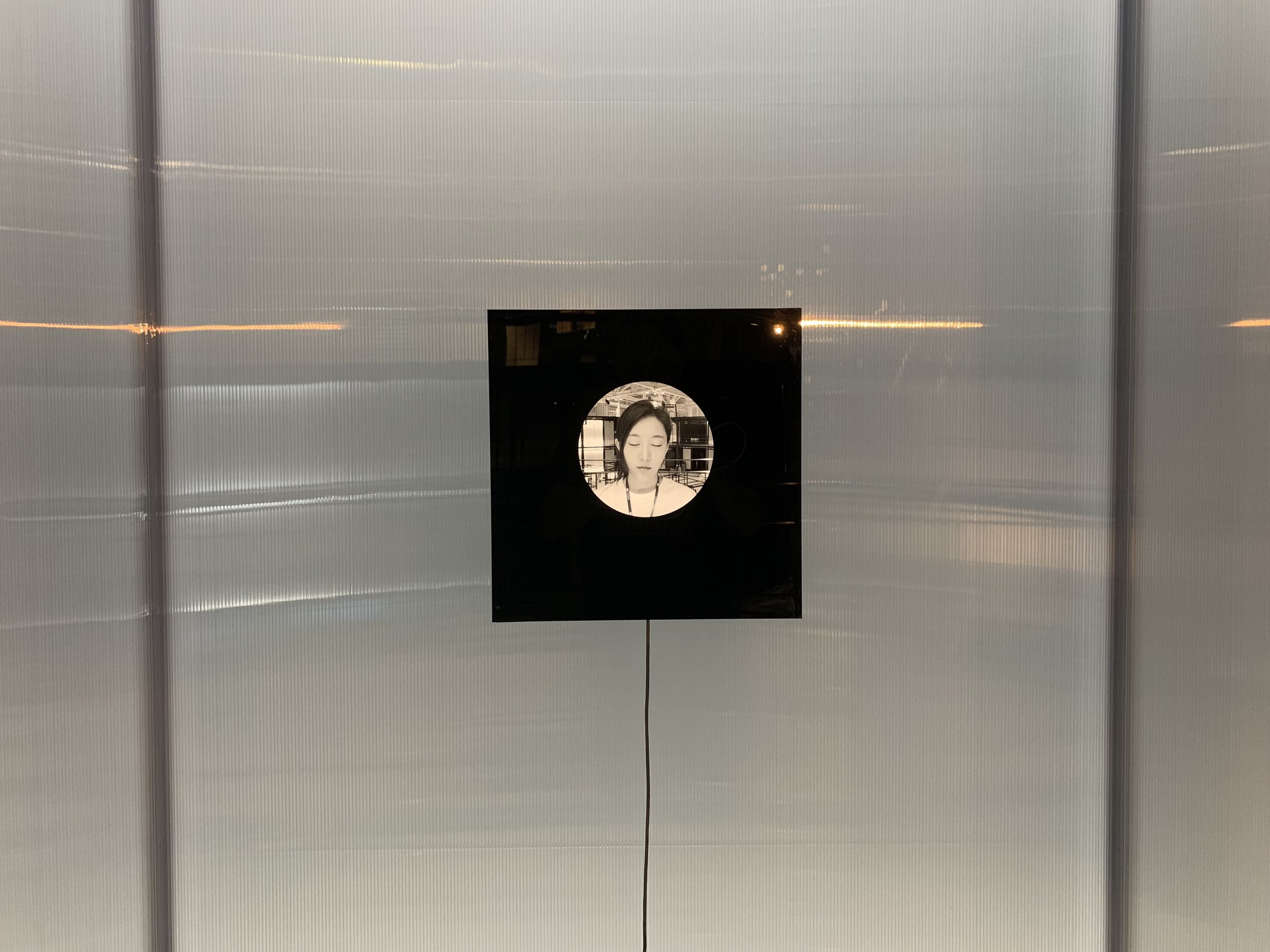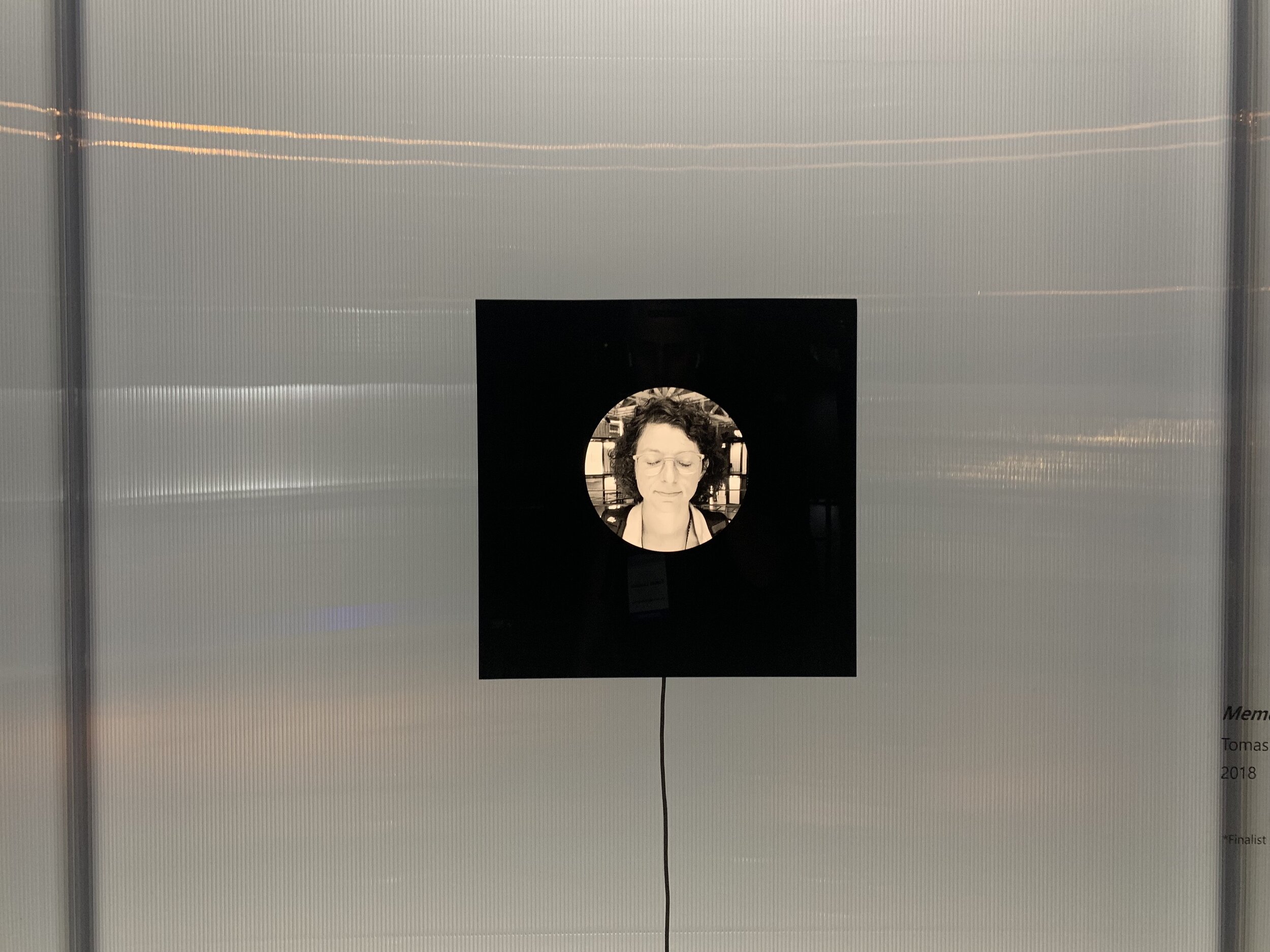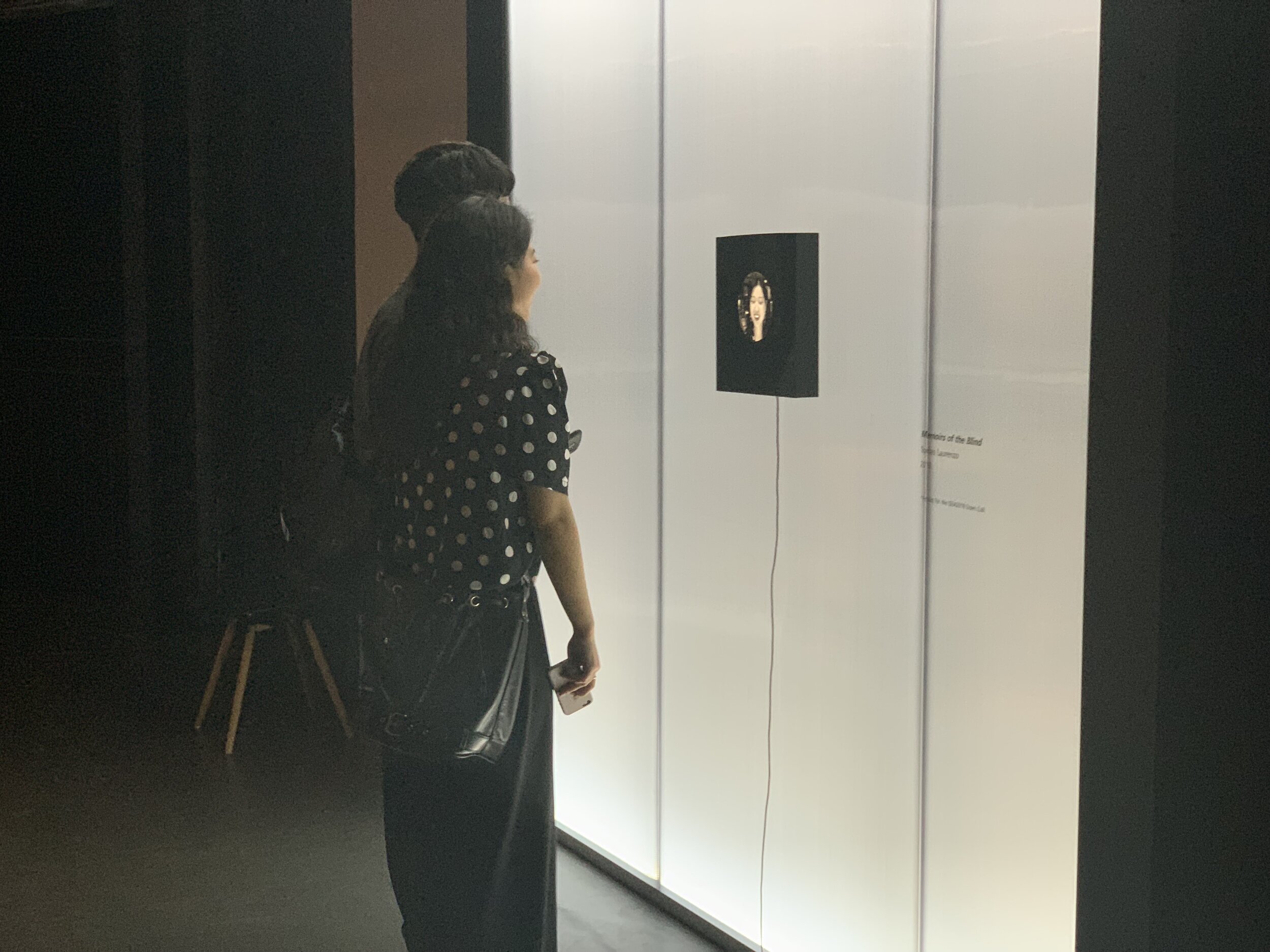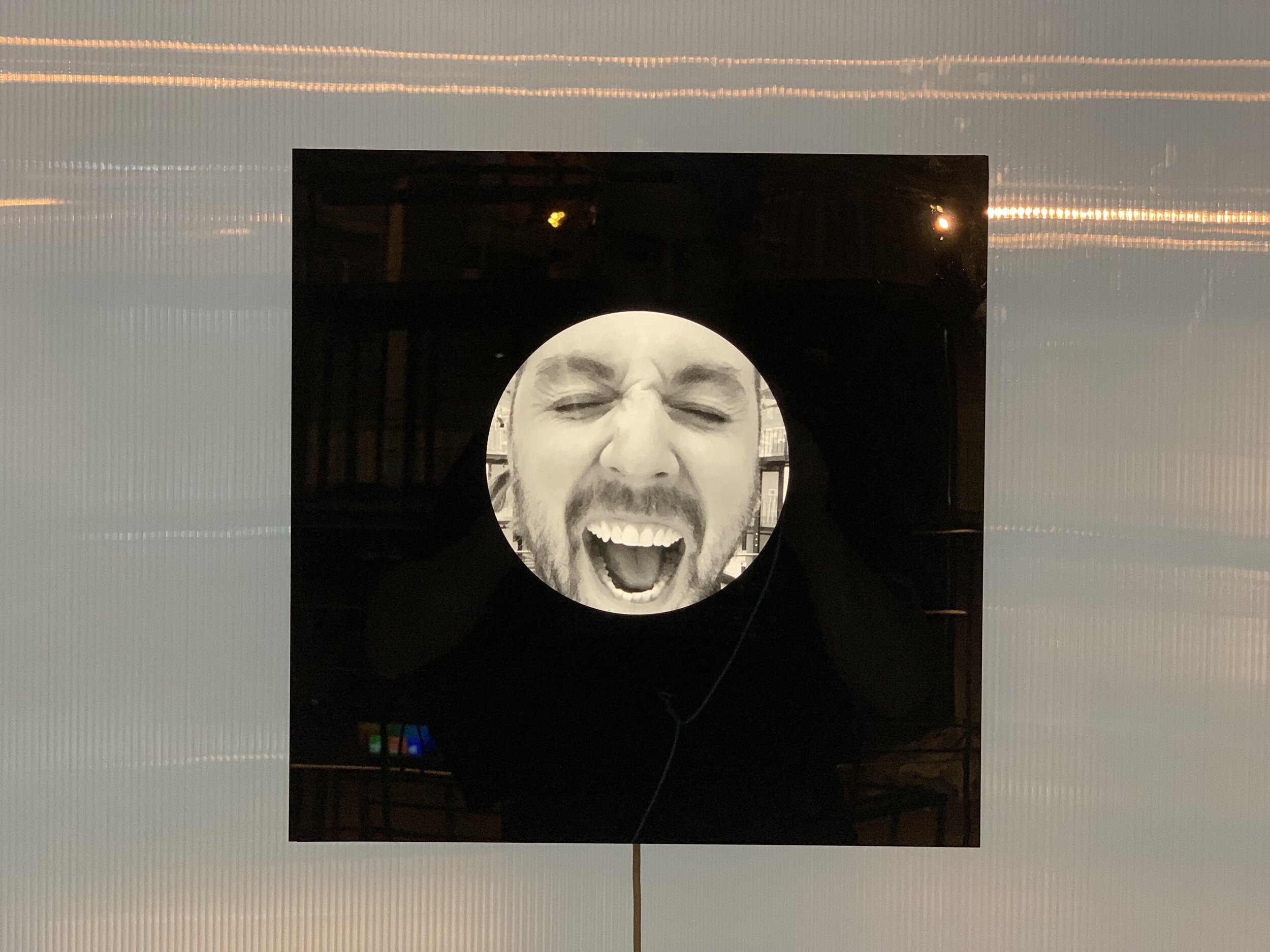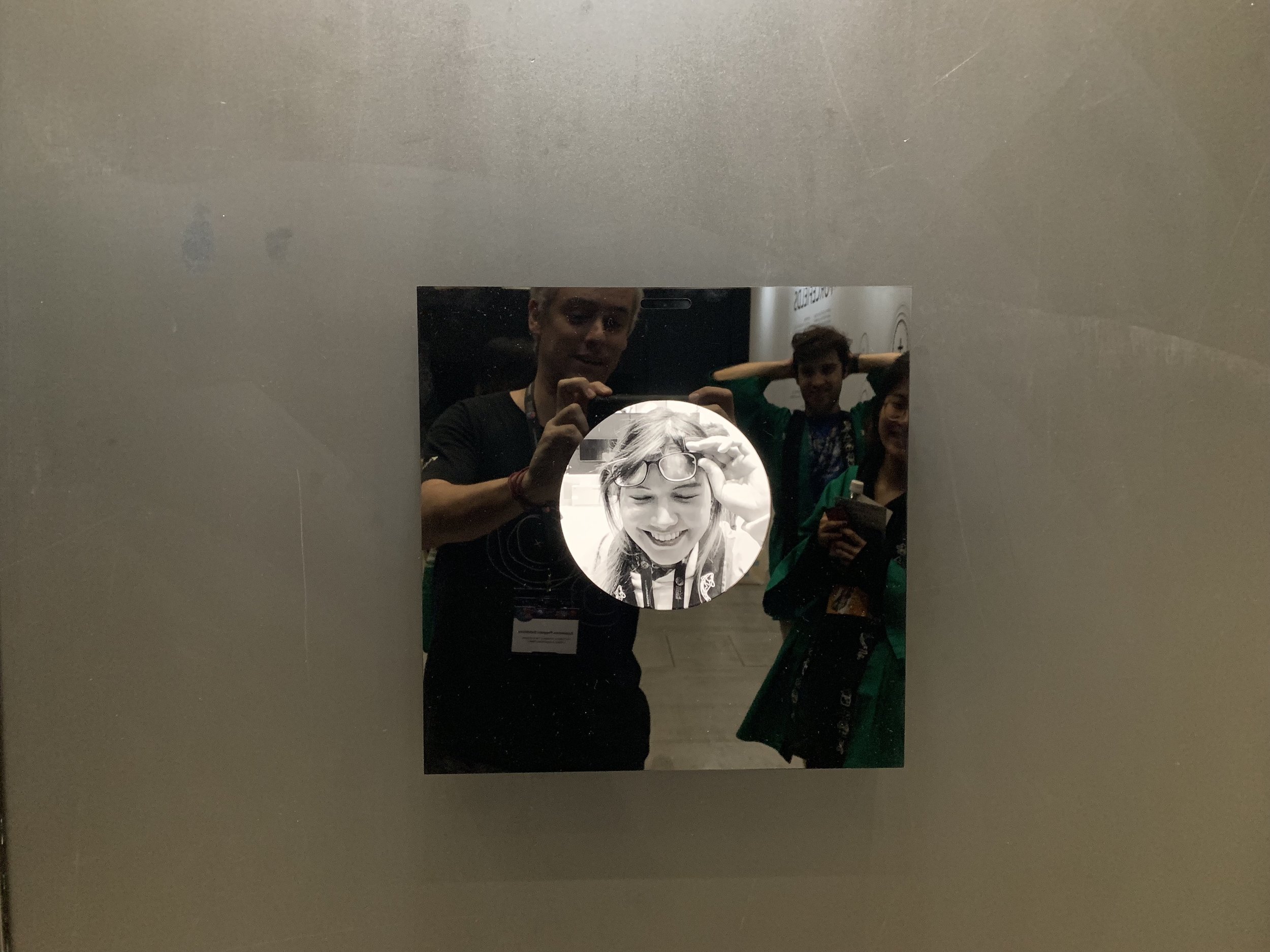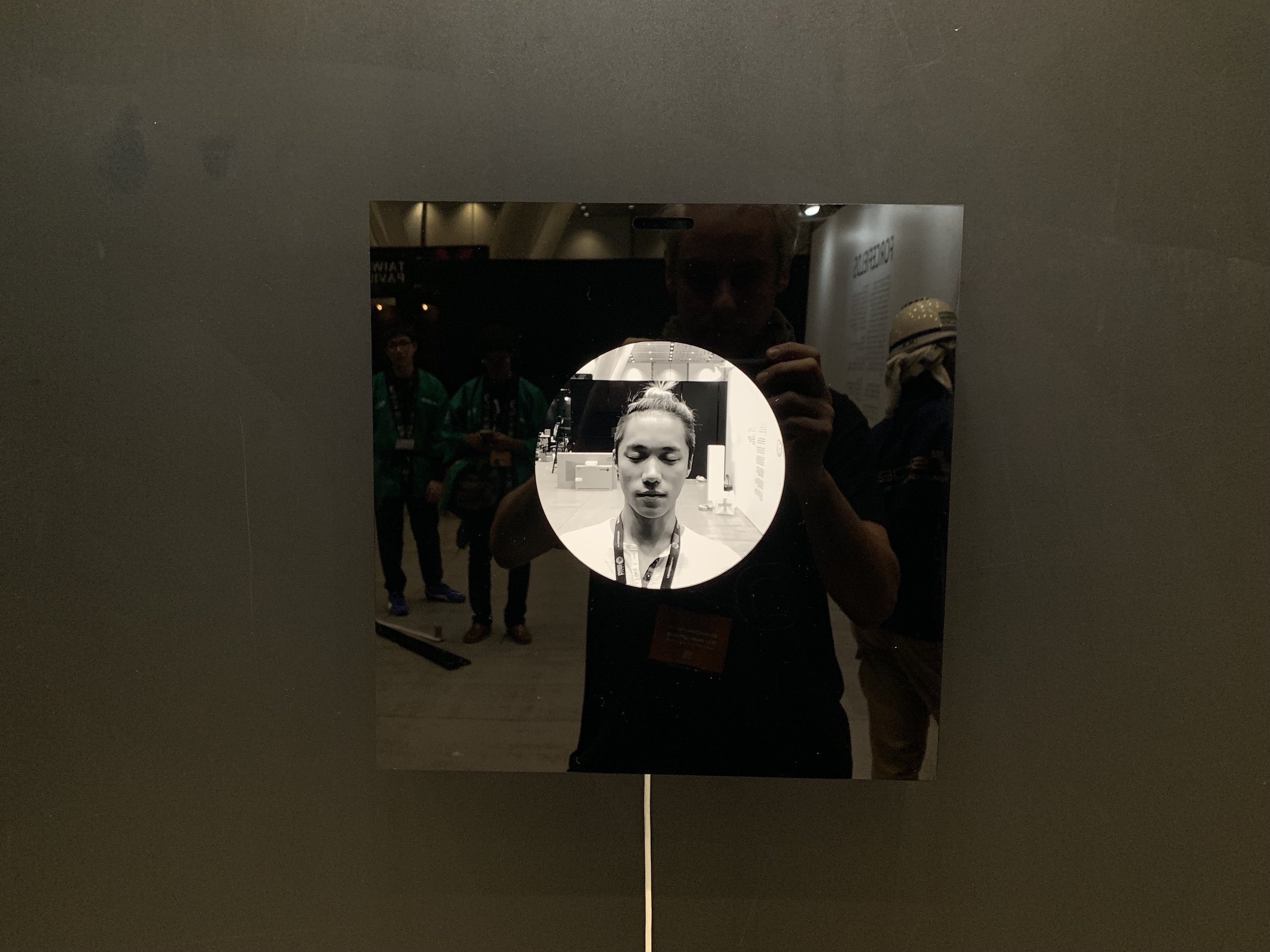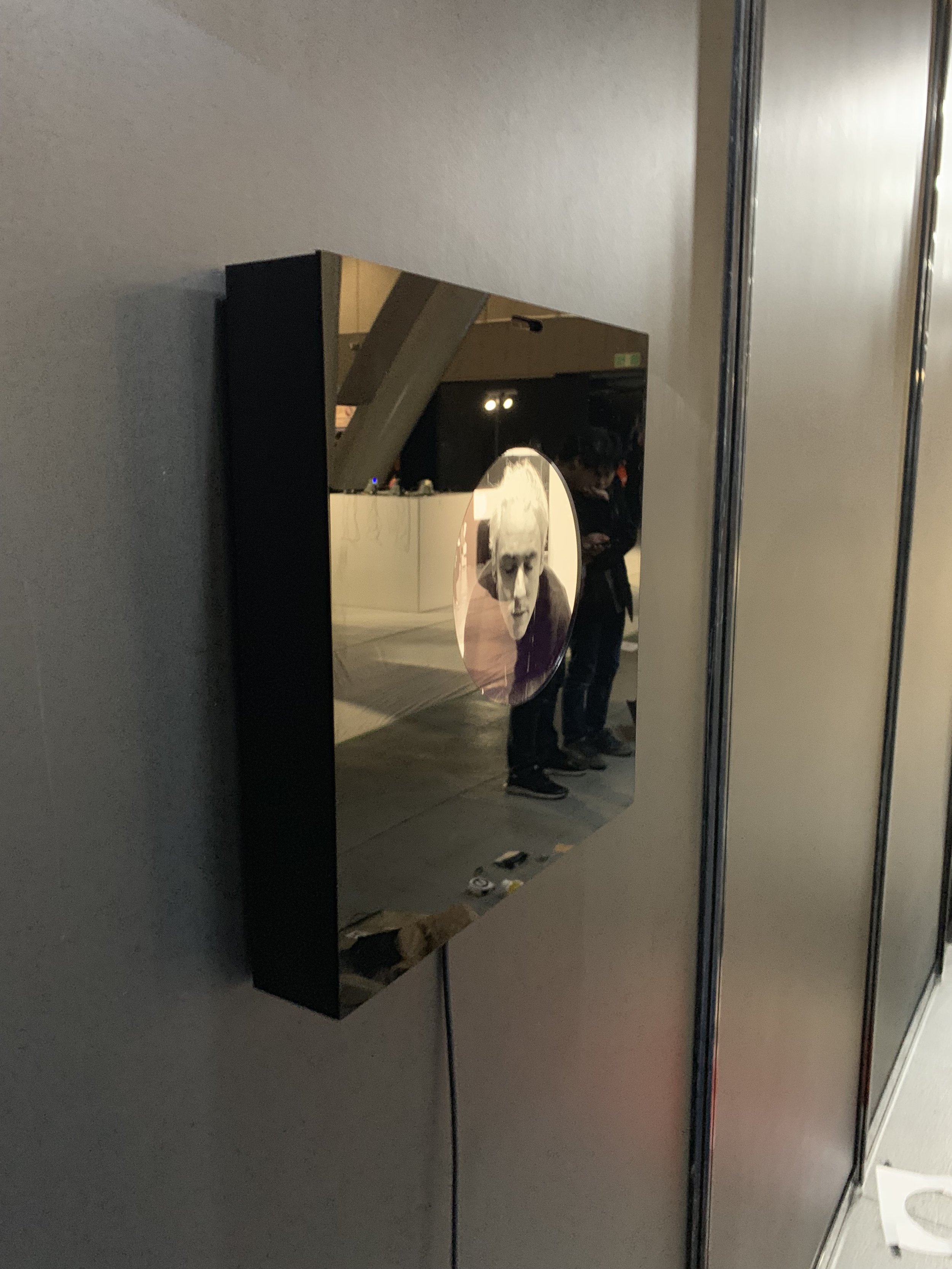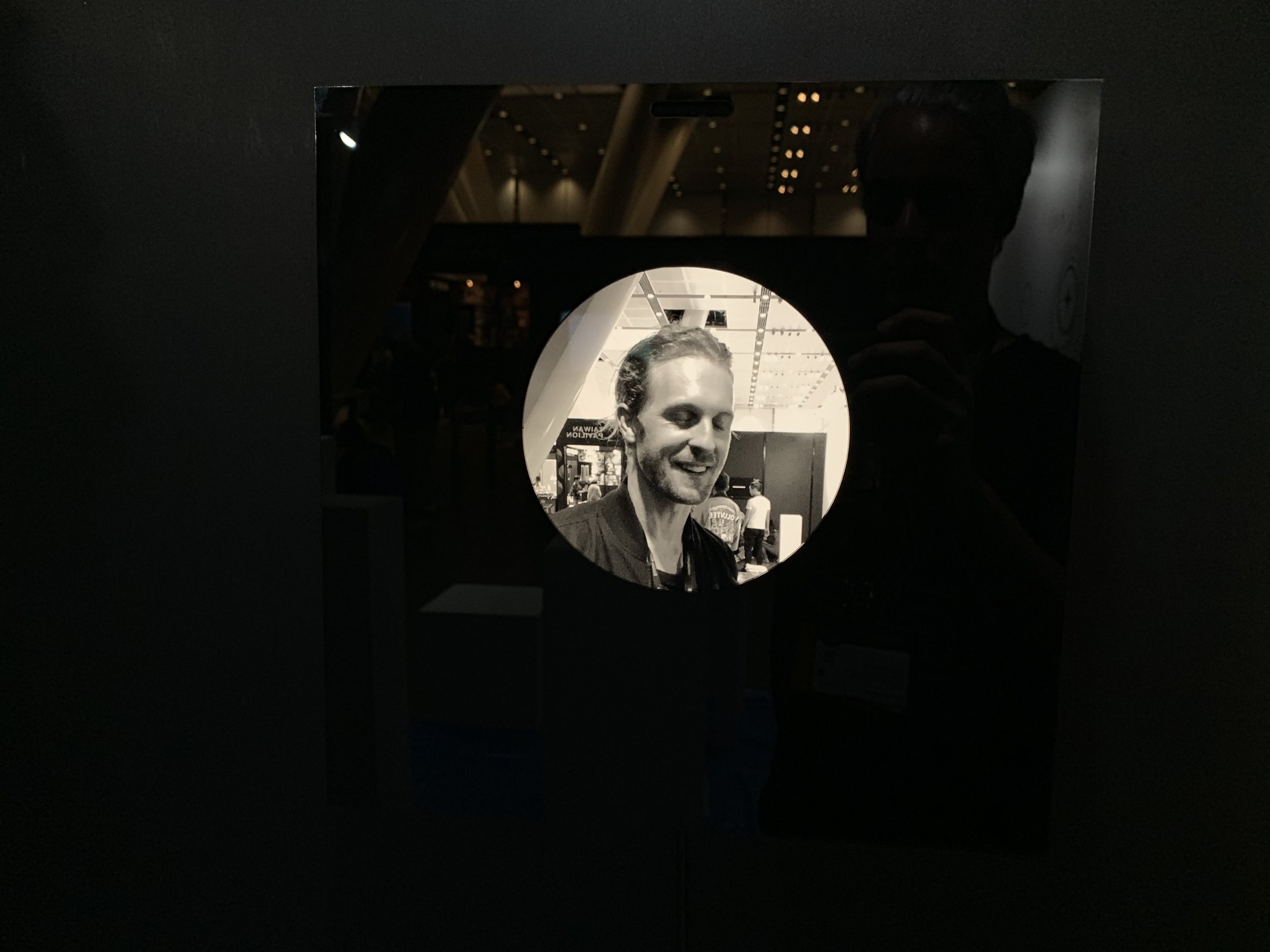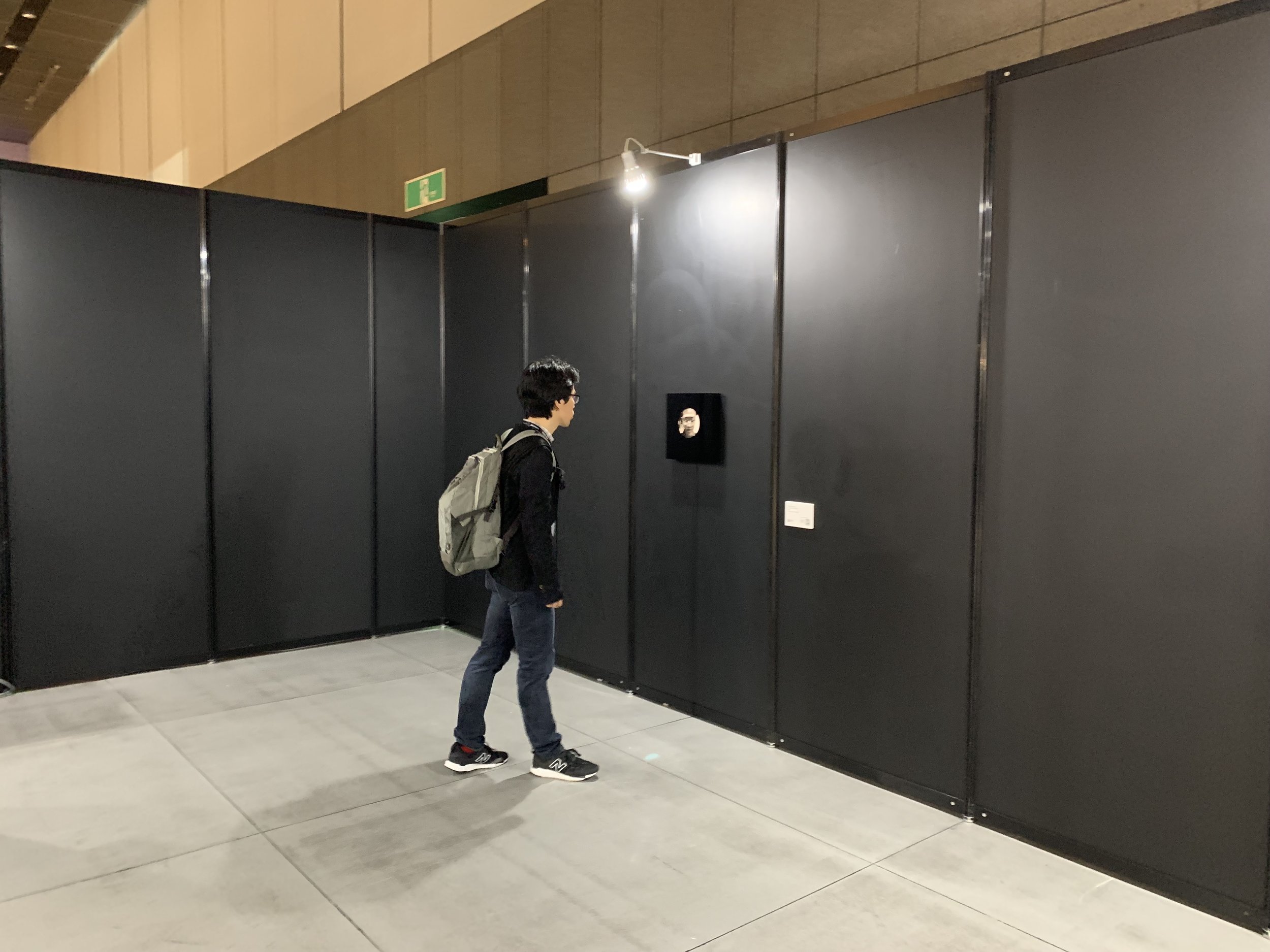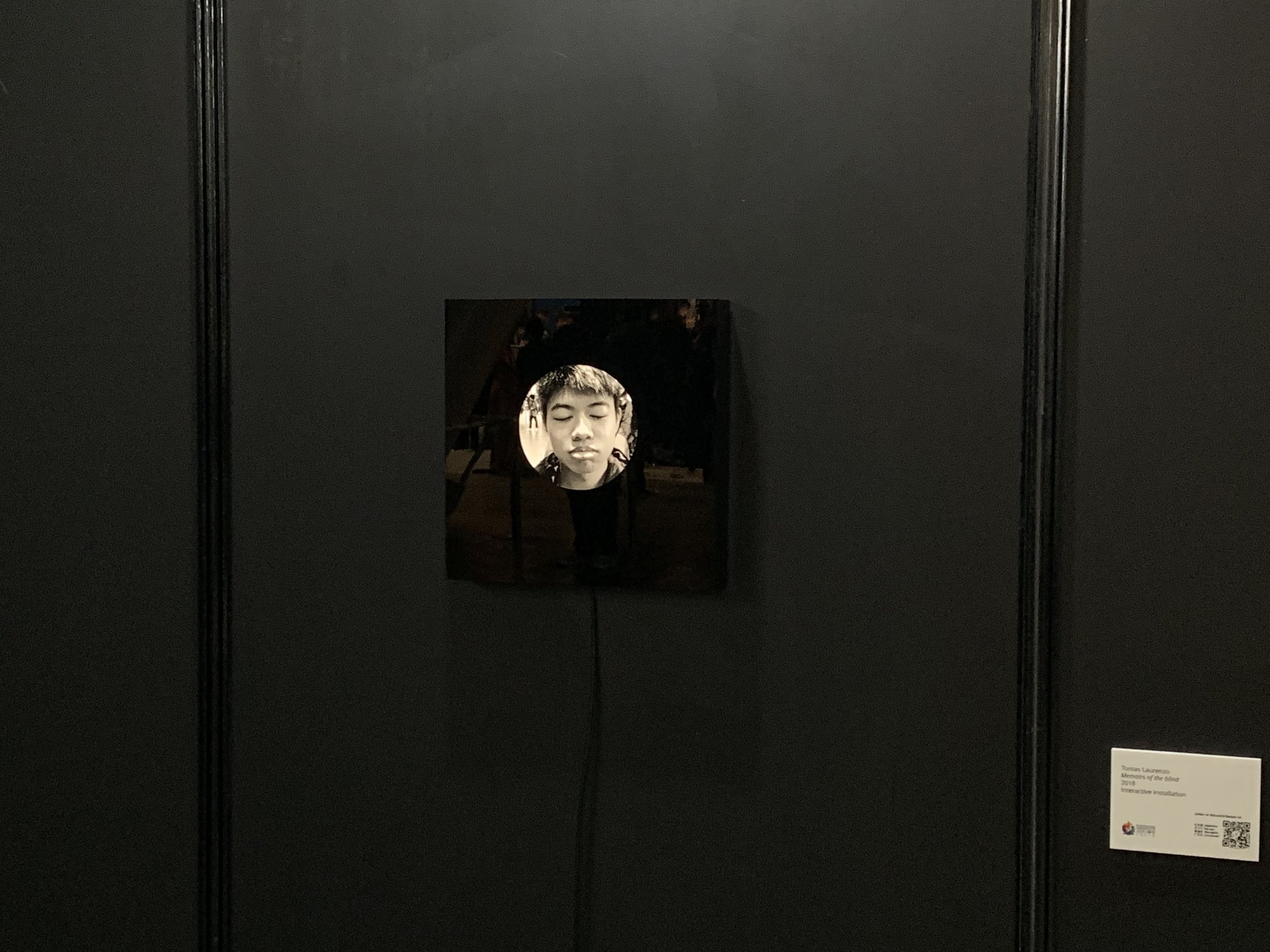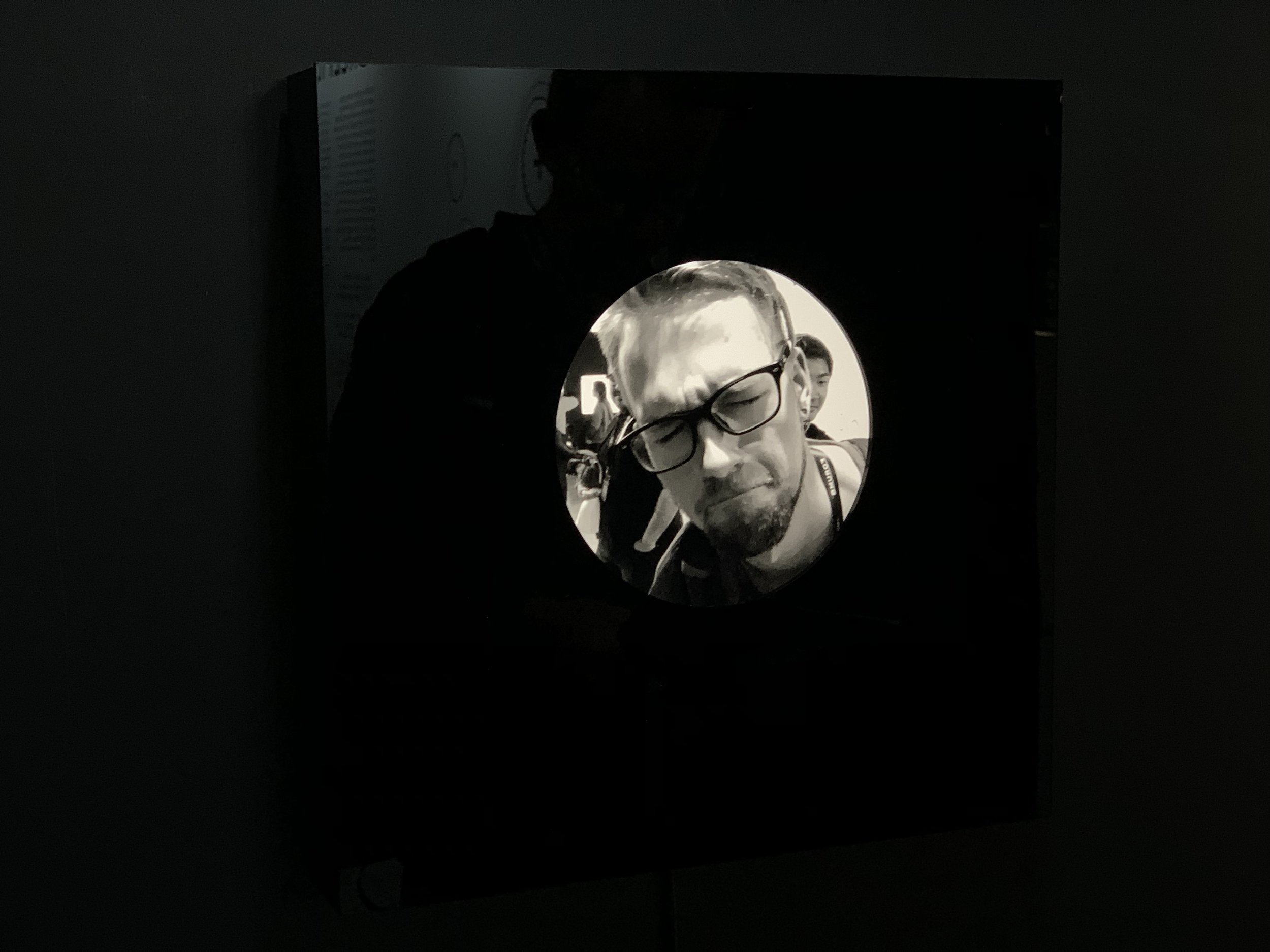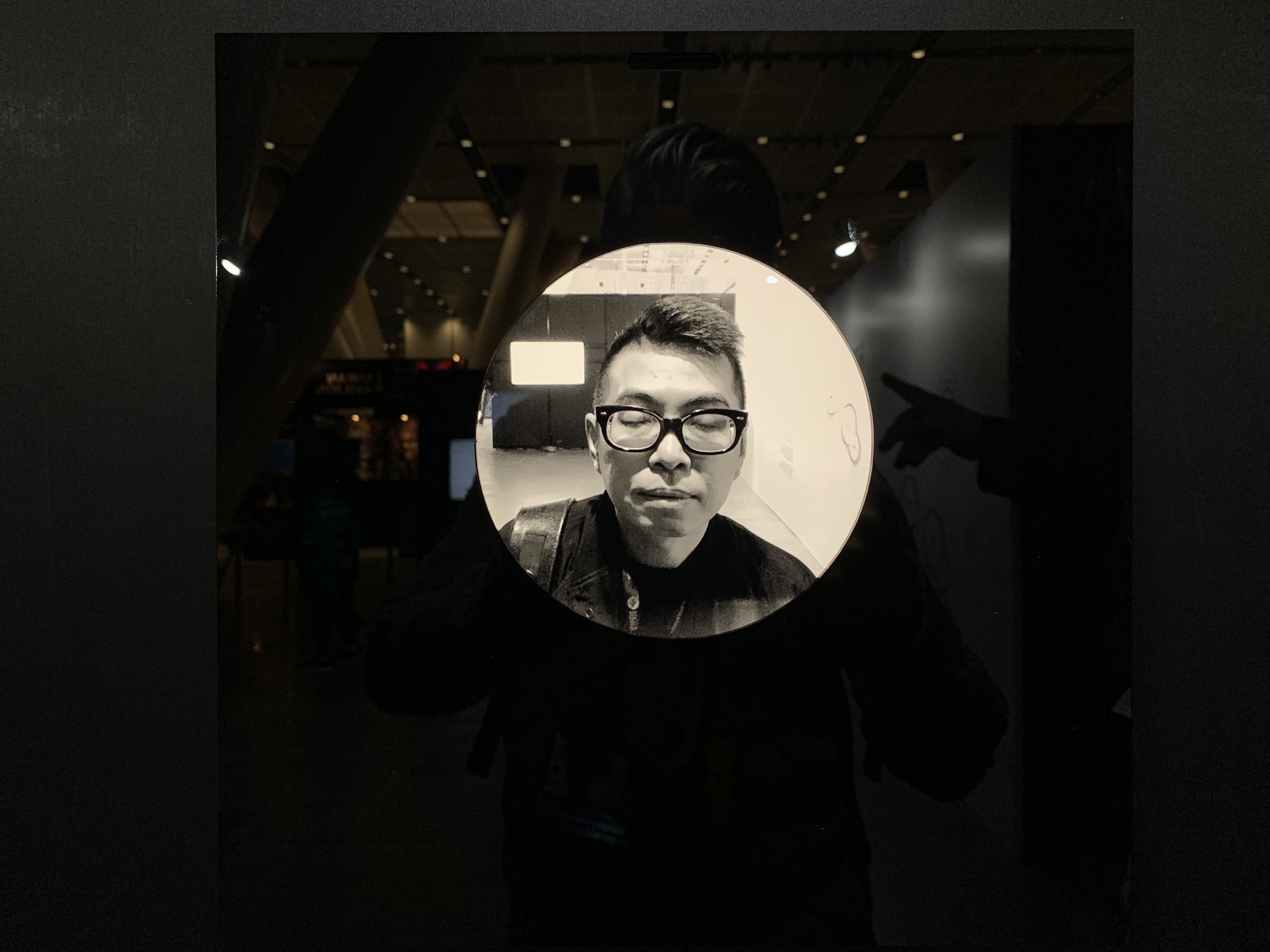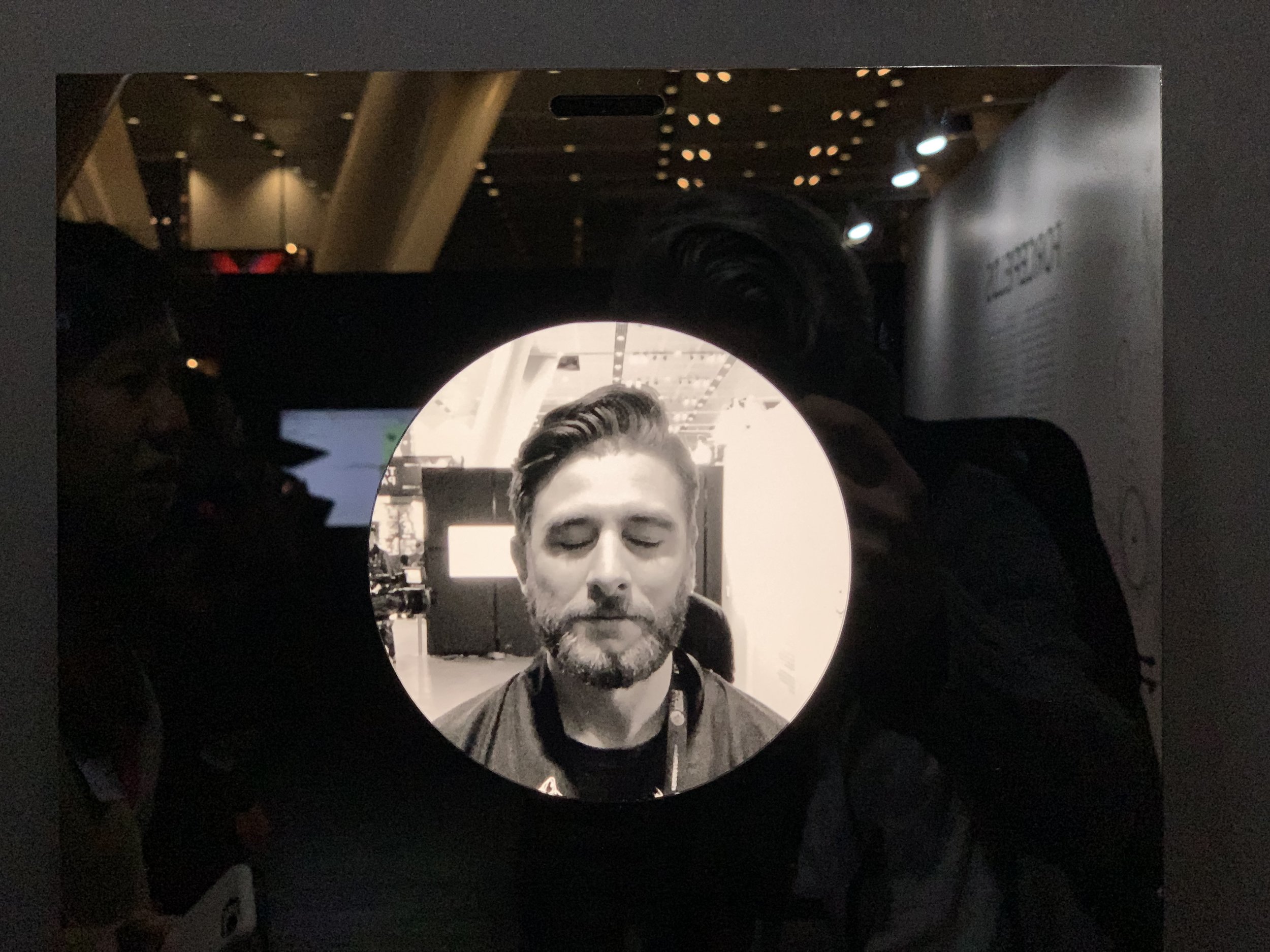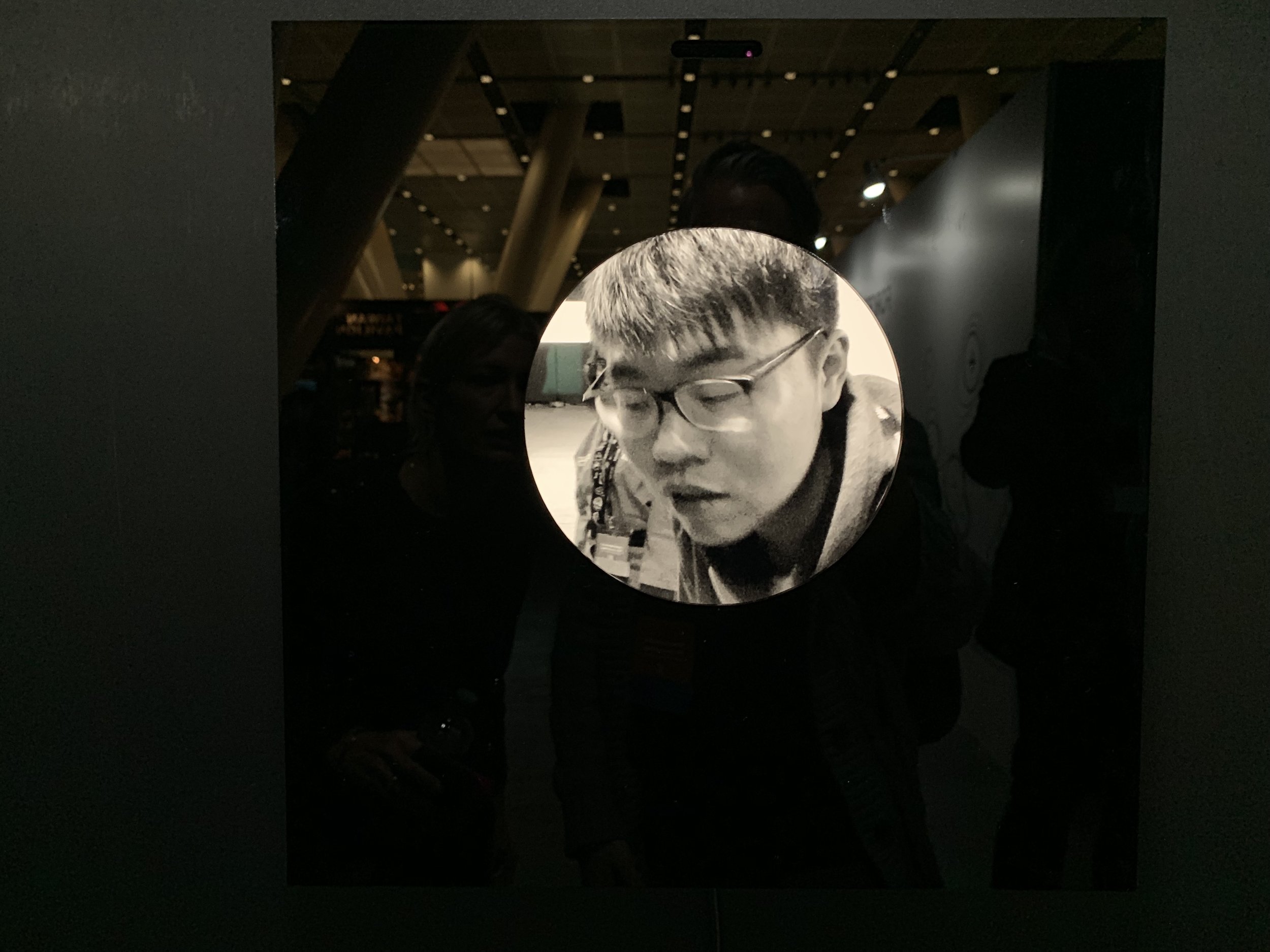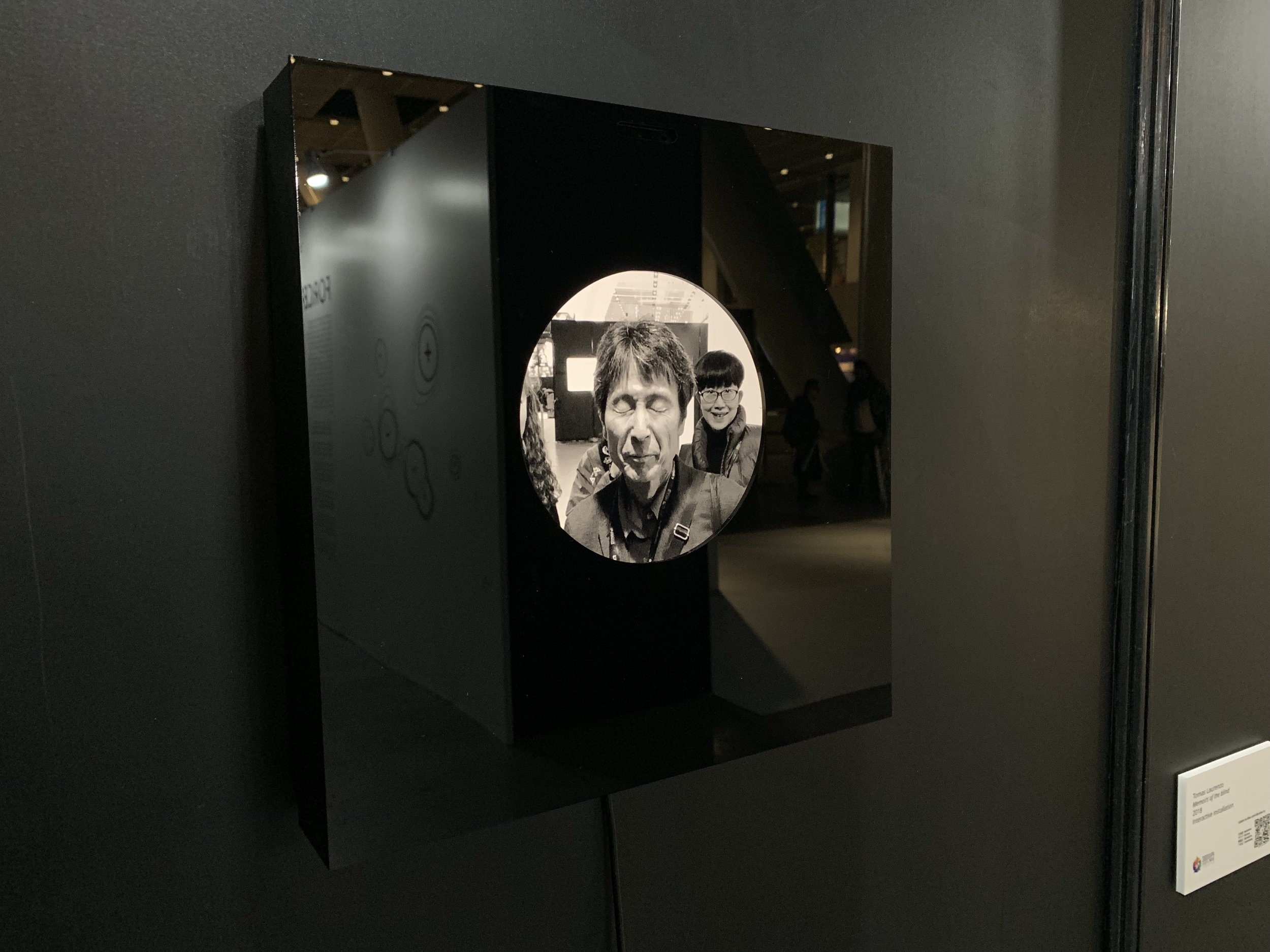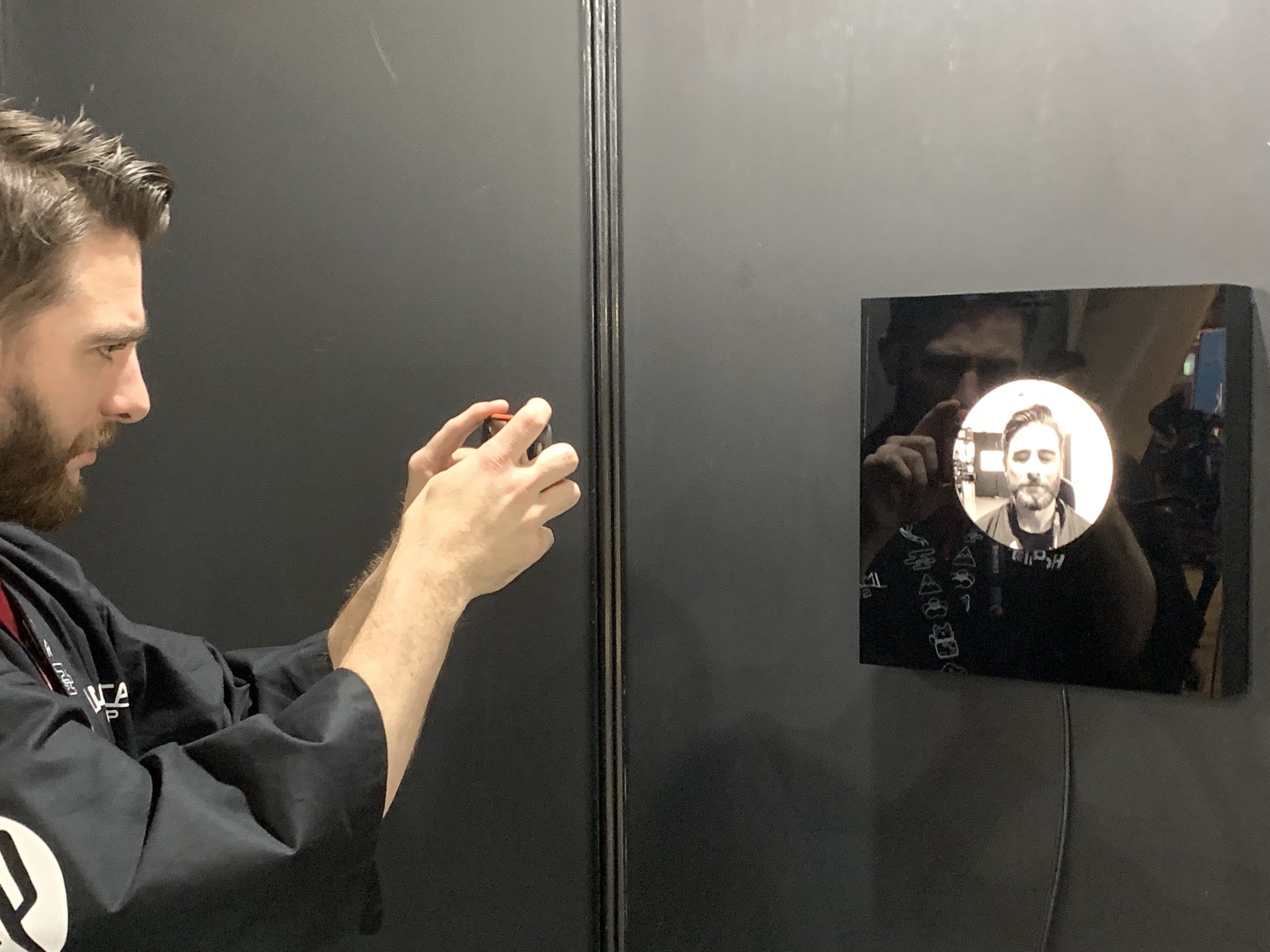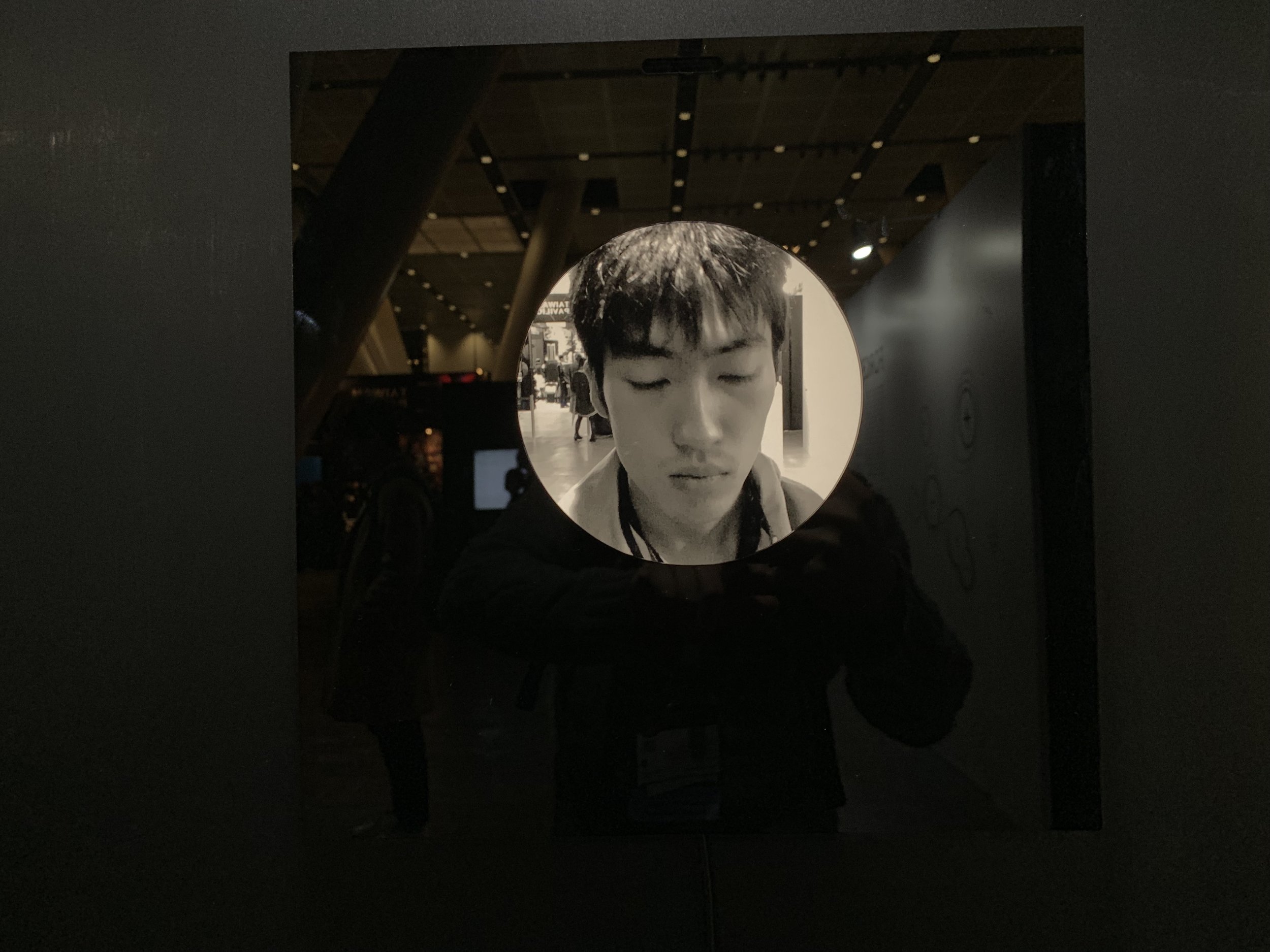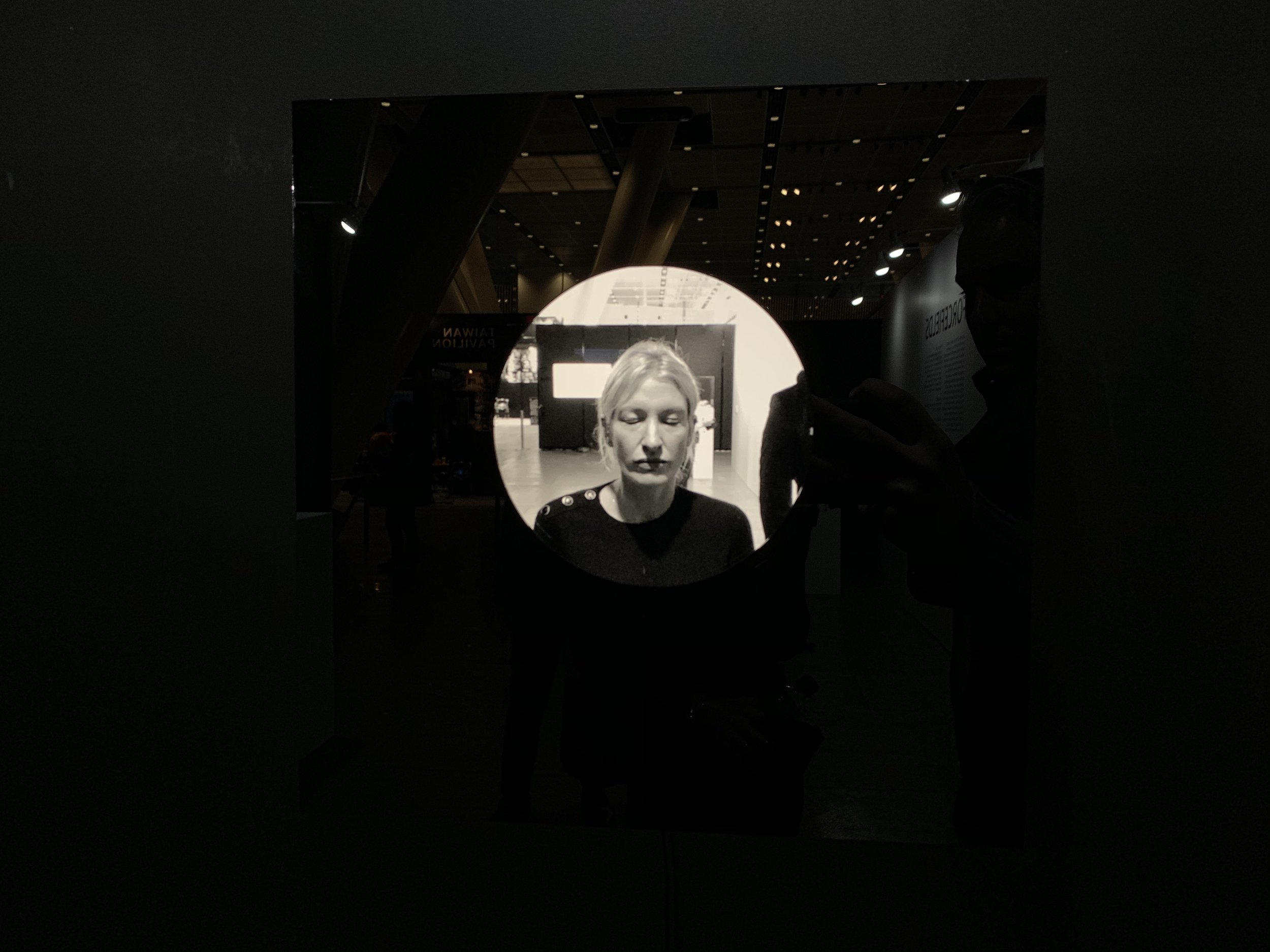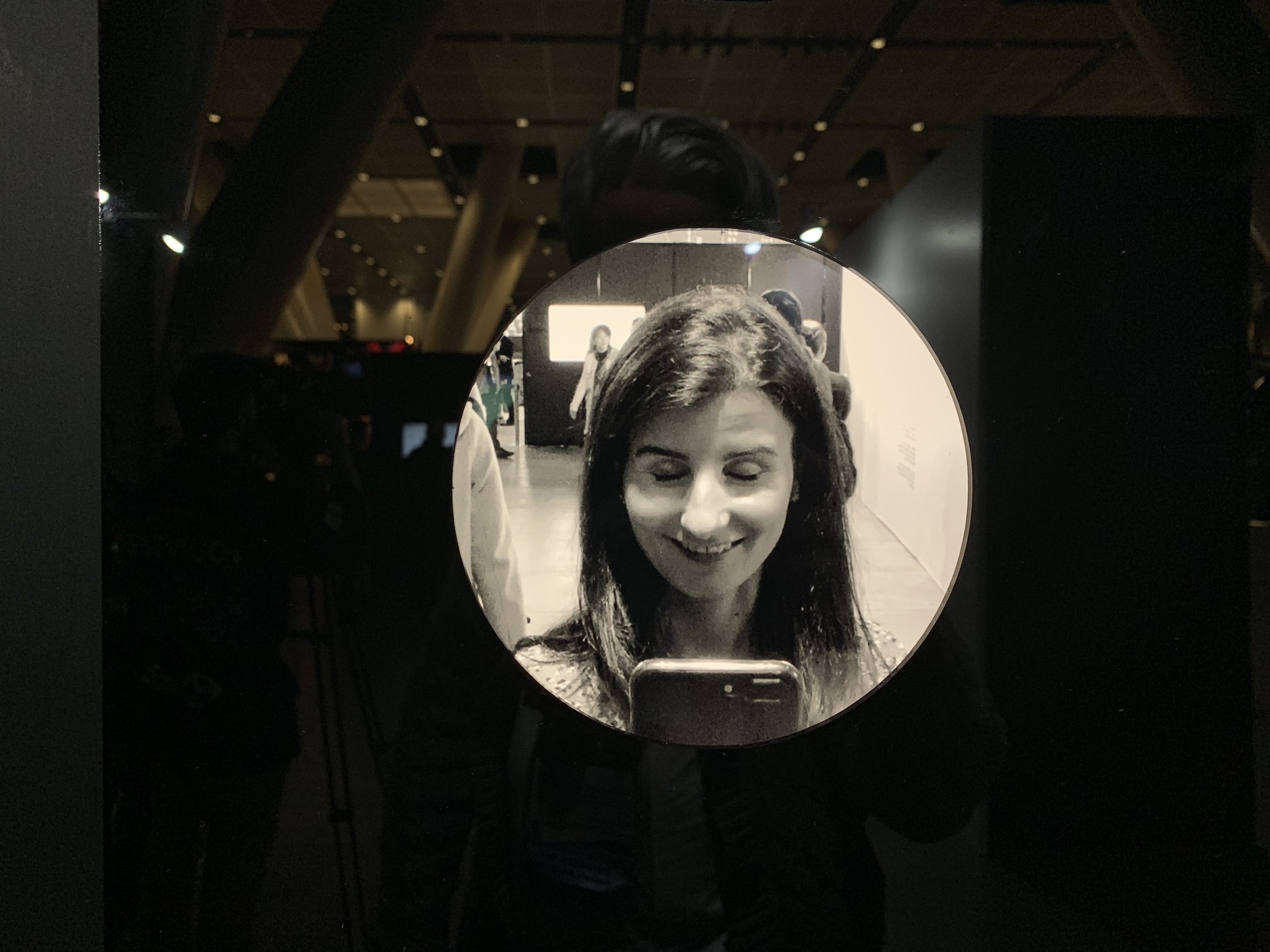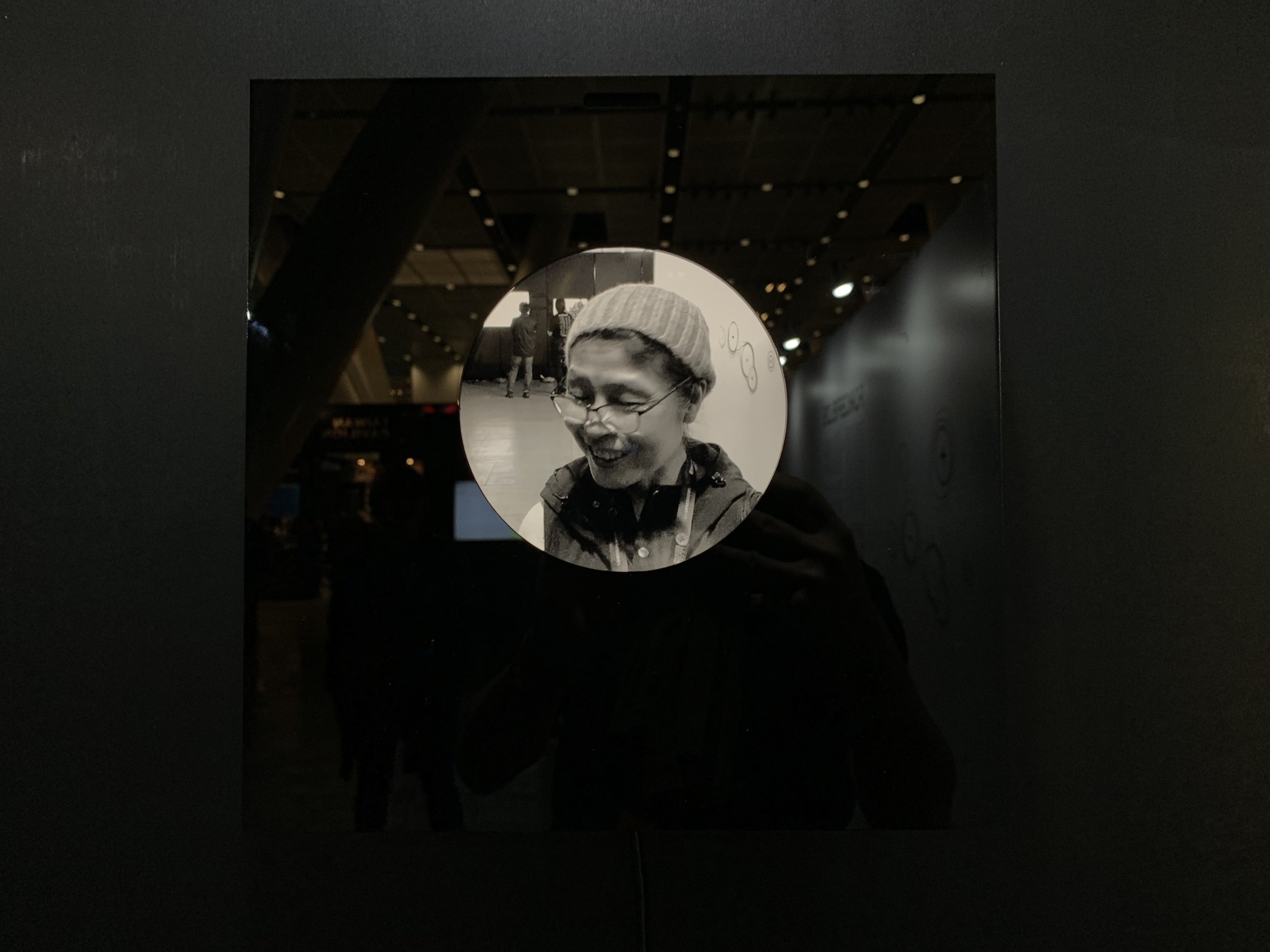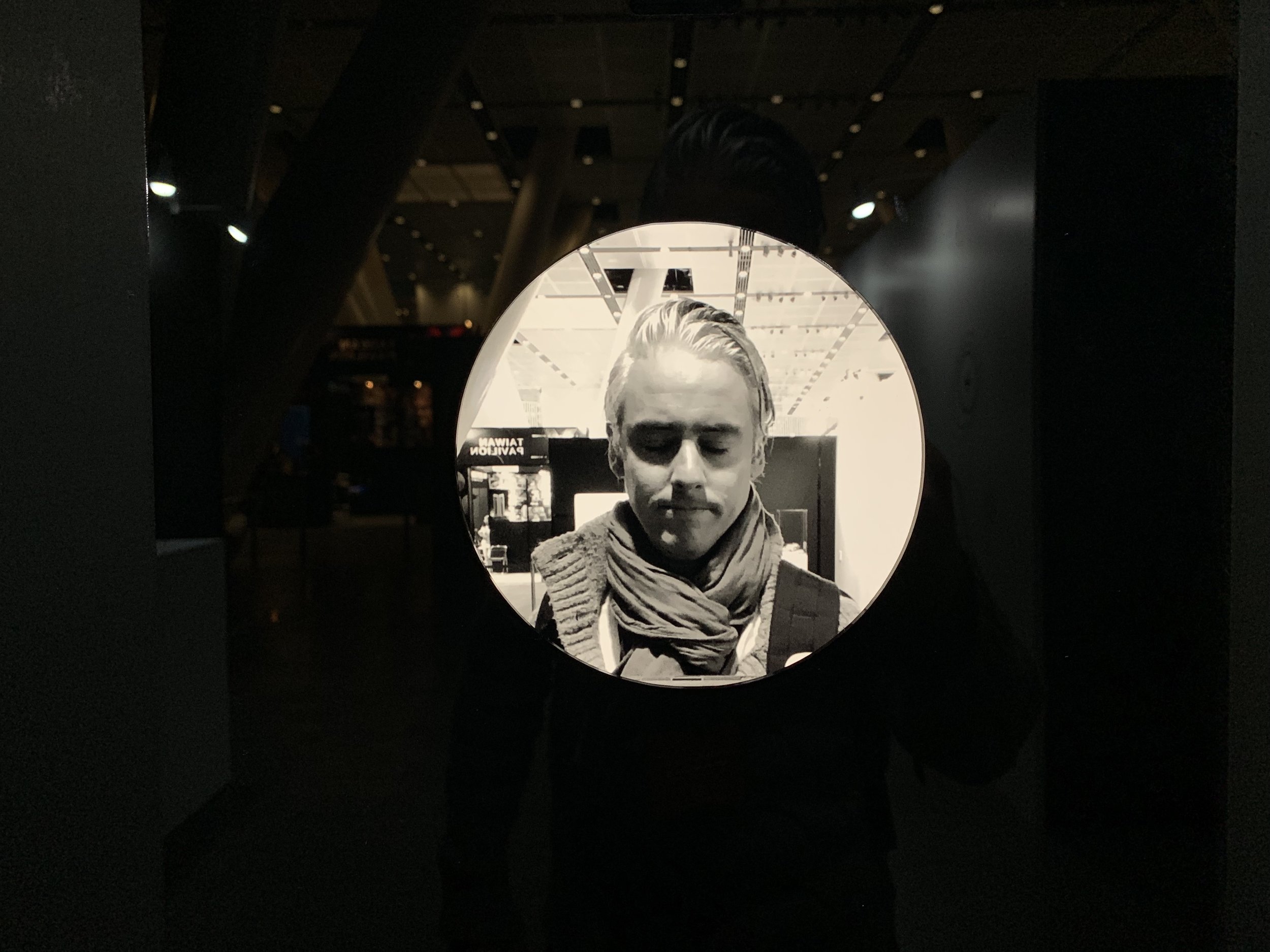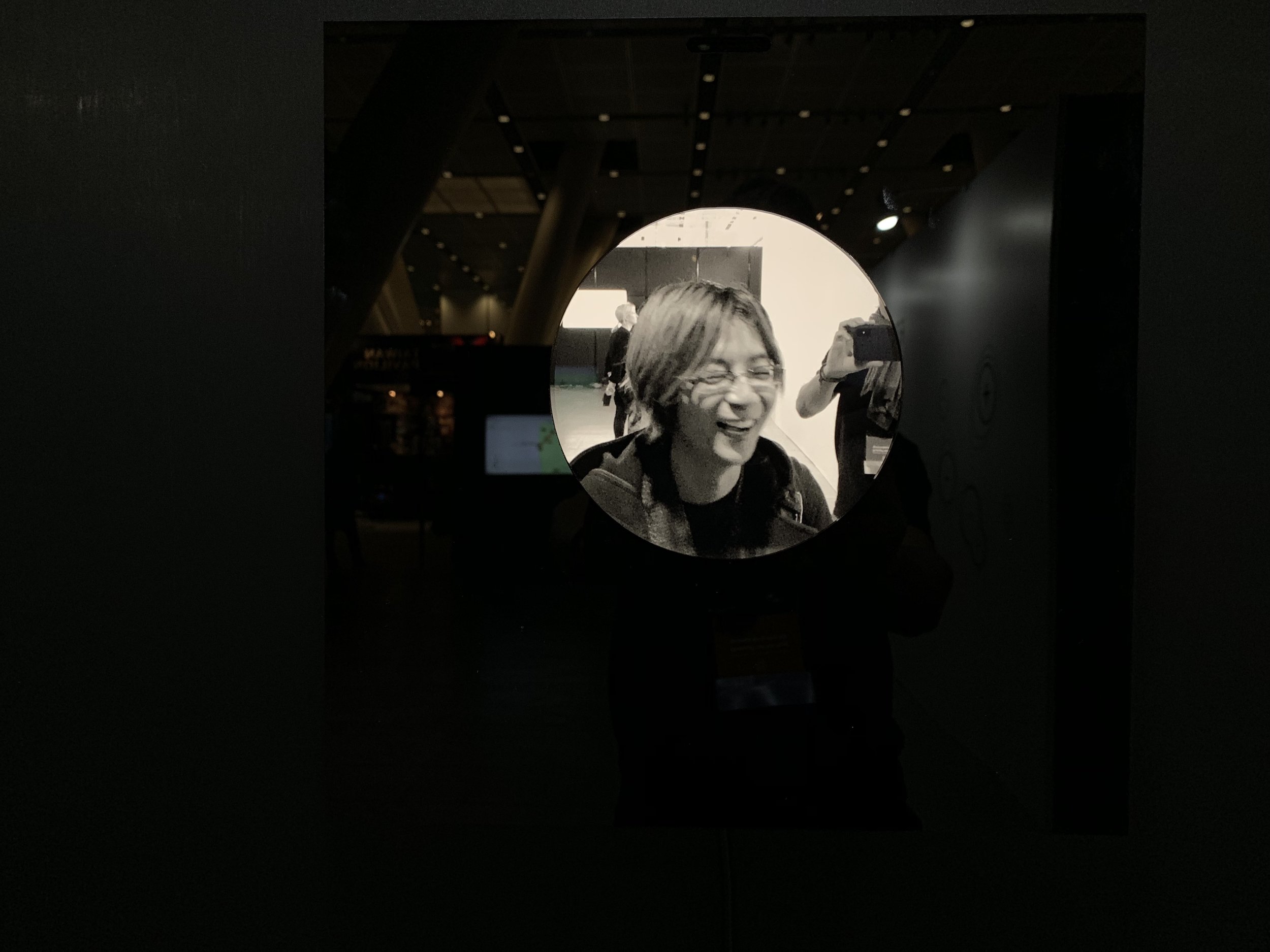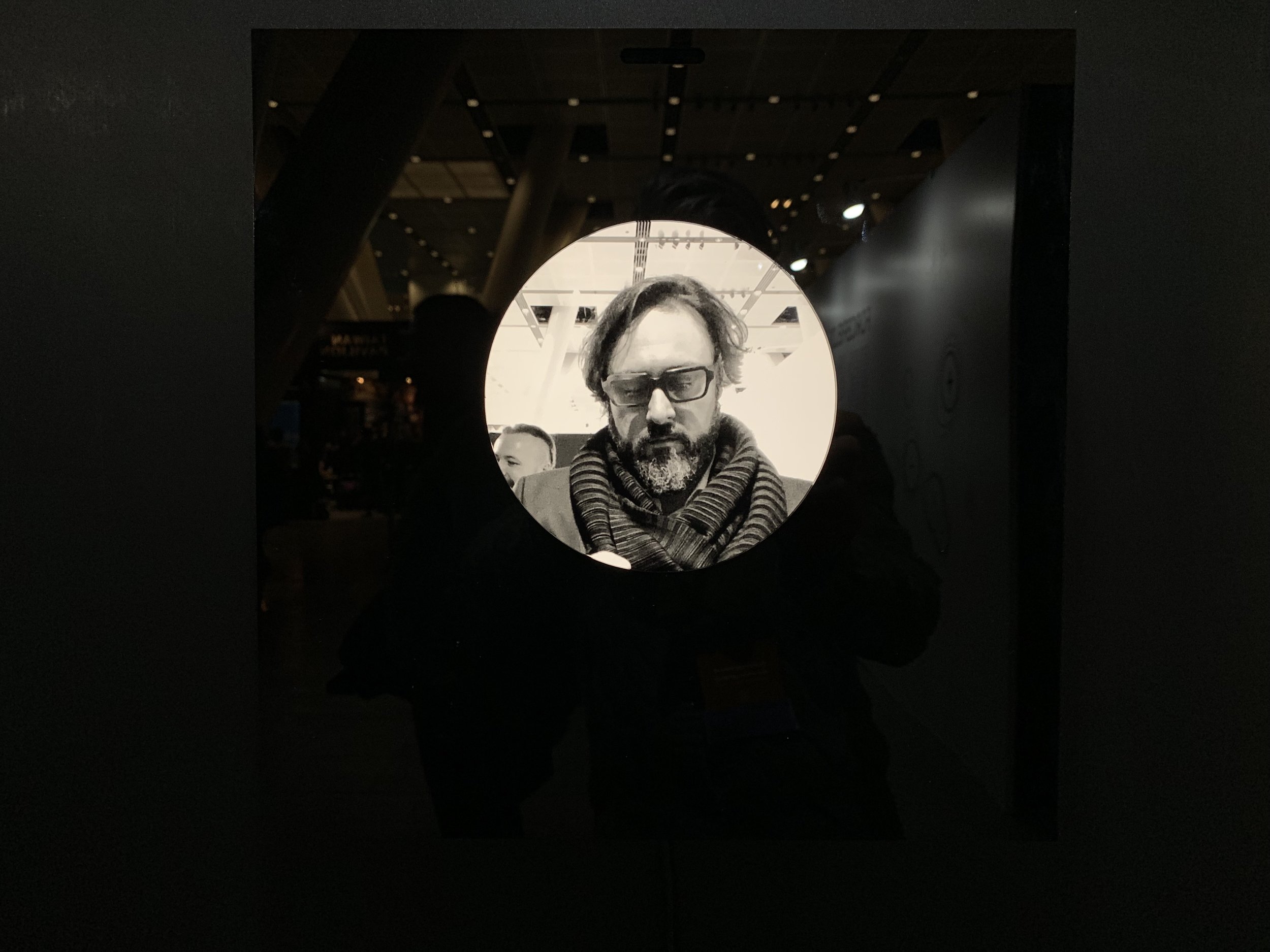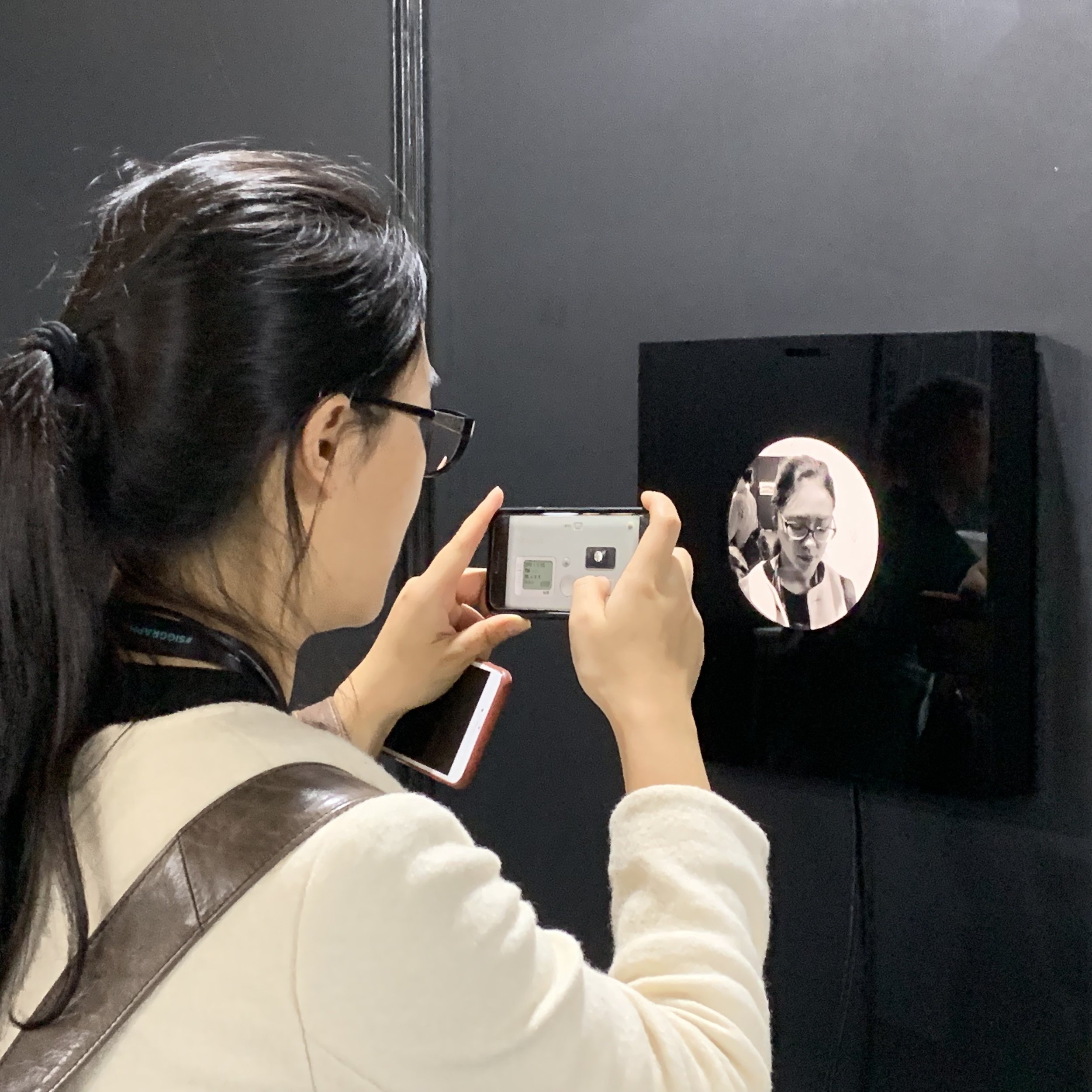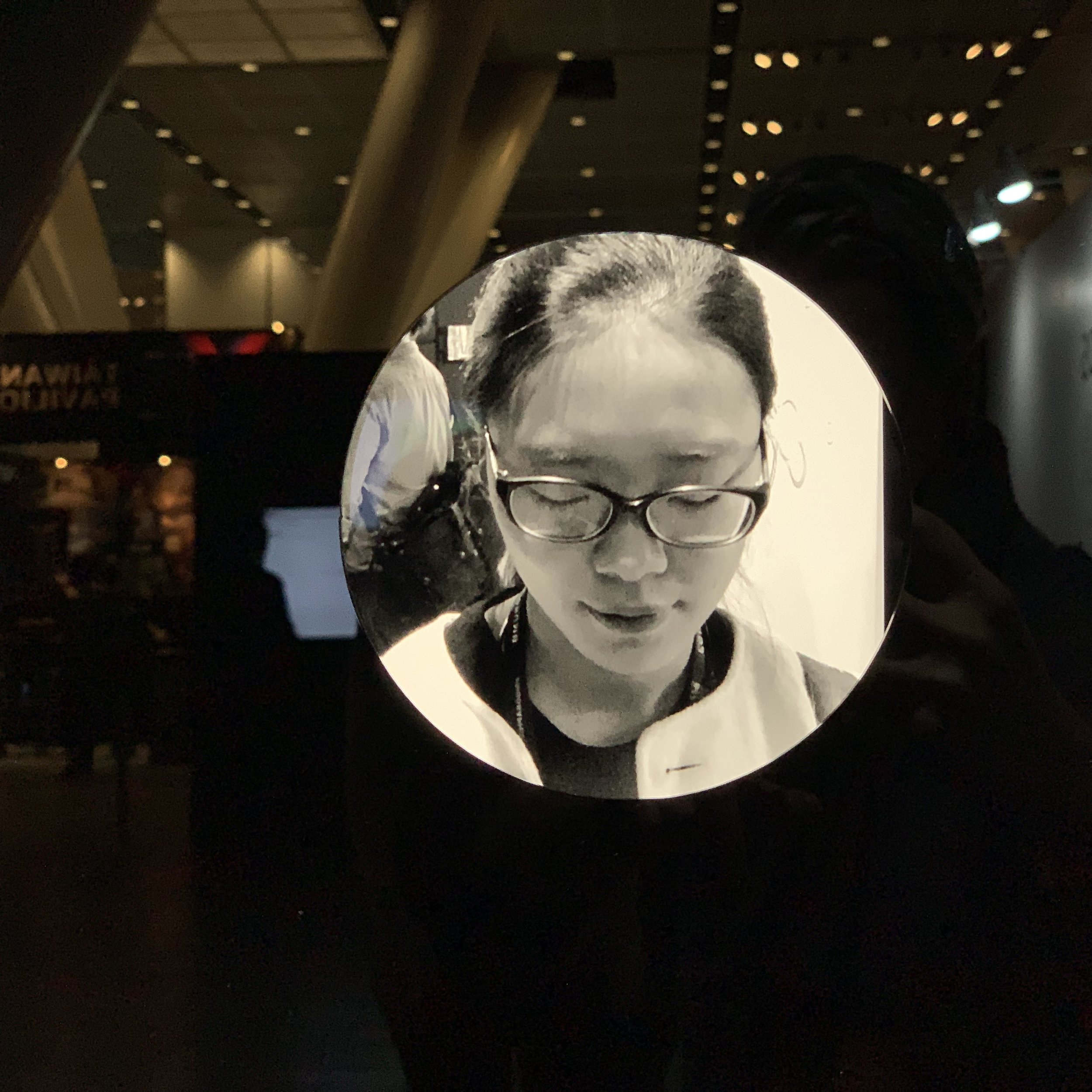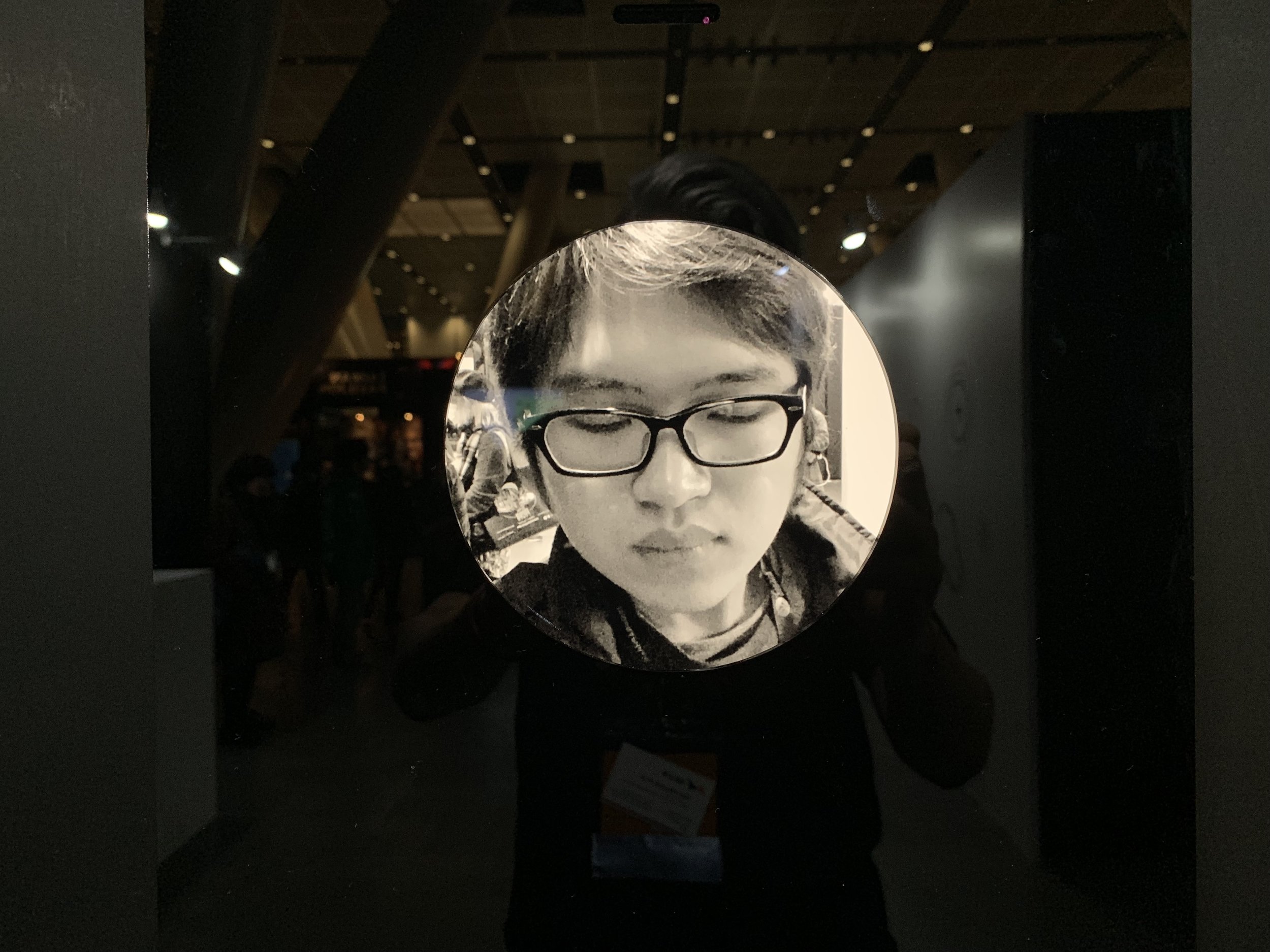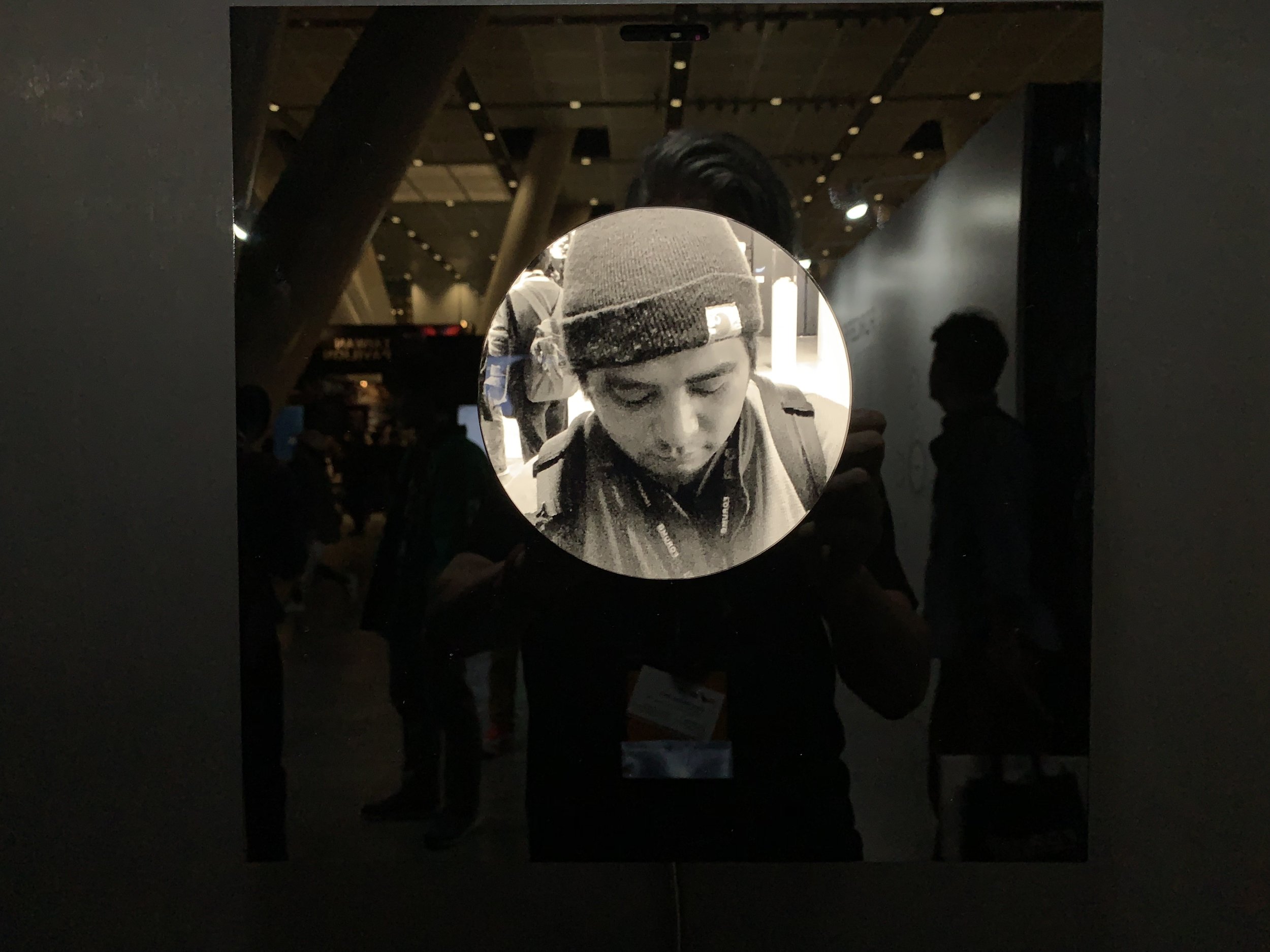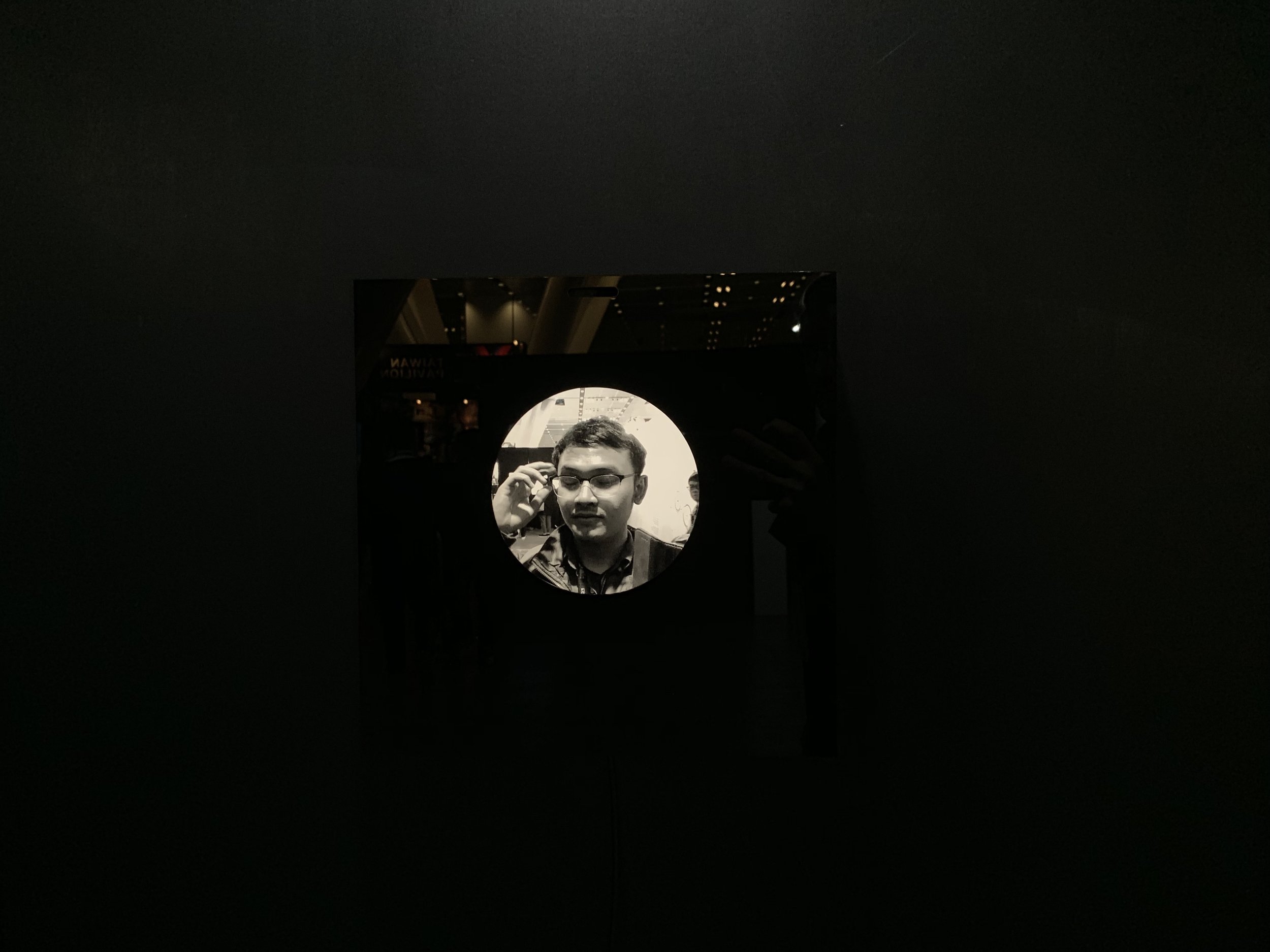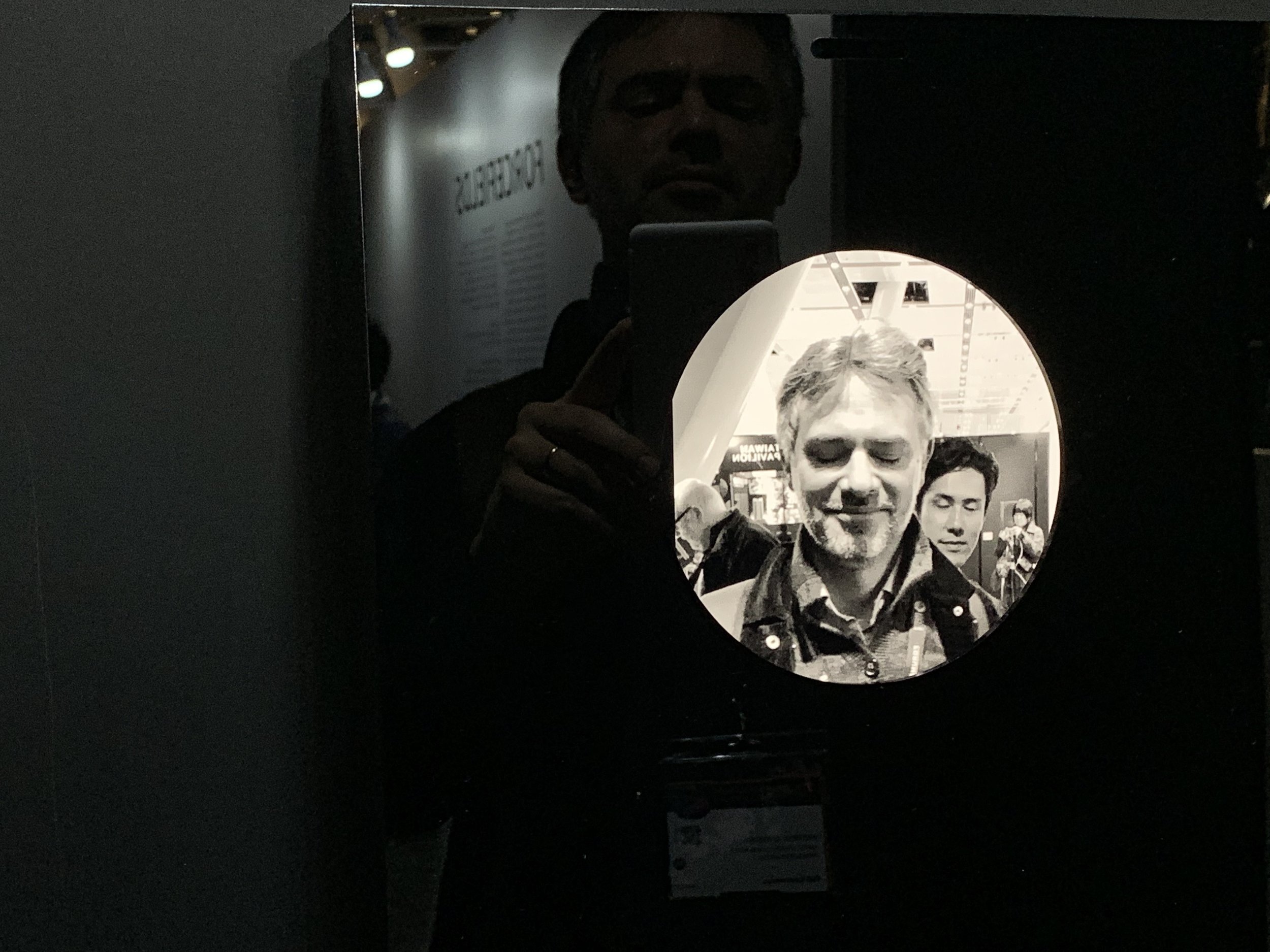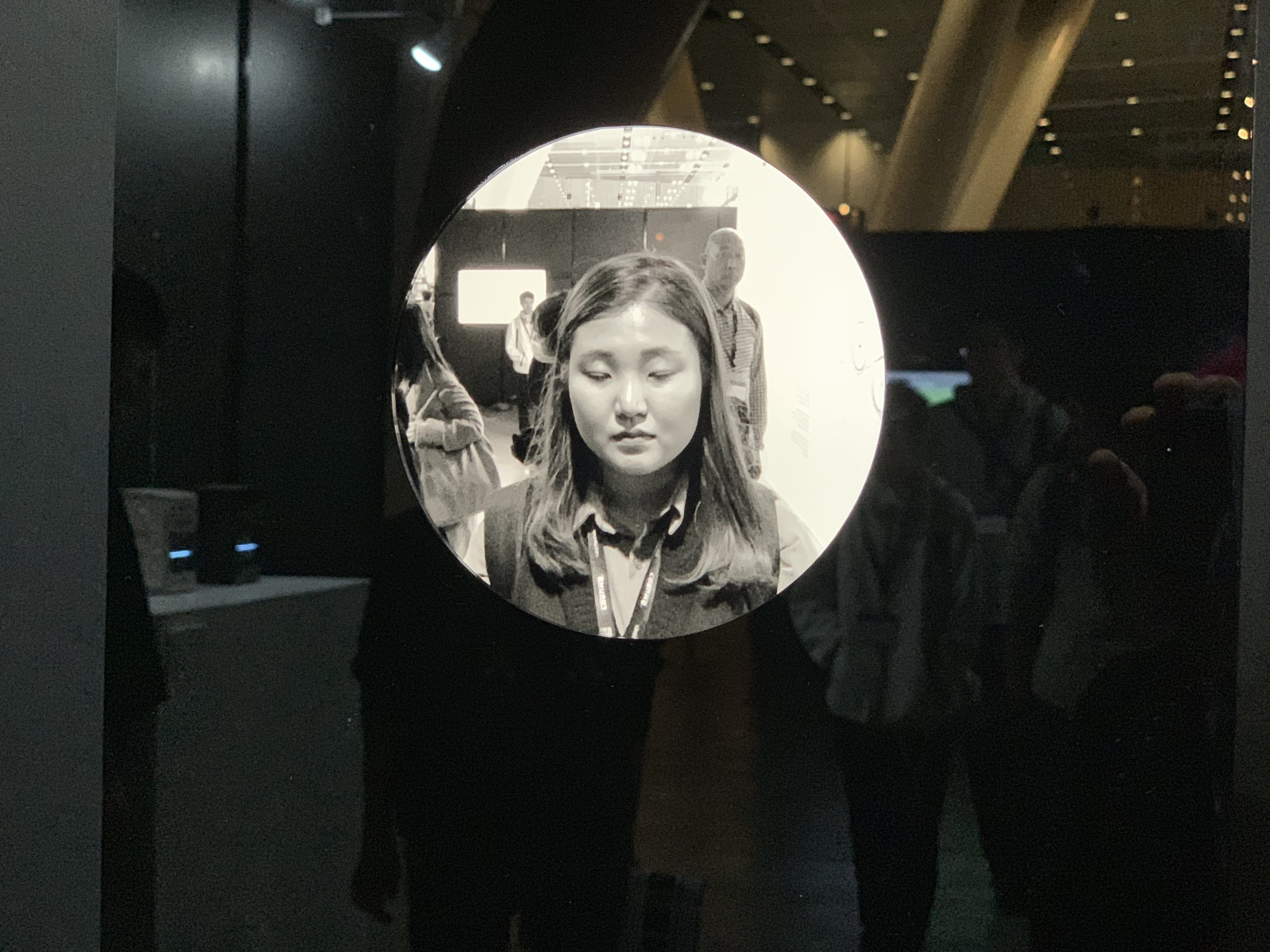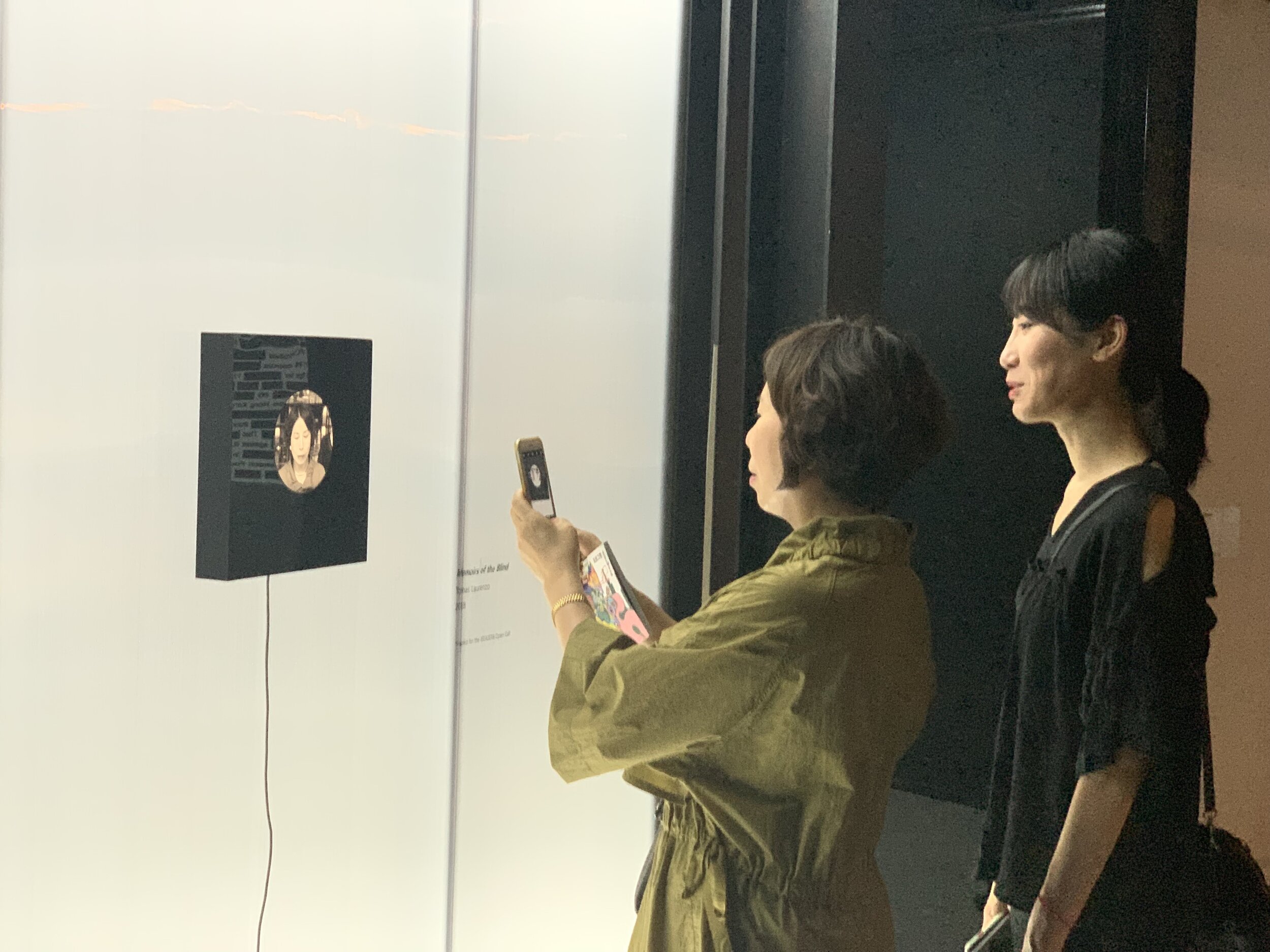Memoirs of the Blind
Memoirs of the Blind is an interactive installation consisting of a screen showing a black-and-white picture of a face with its eyes closed. This image at first remains still, however, when the interactor blinks, the installation detects it and takes a photo at the exact time of the blinking. Once the new face is obtained, it is processed (cropped, desaturated, and adjusted) and then it substitutes the displayed face.
The artwork becomes a testimony of its visitors, interacting with it, but not seeing it: a moment where the visitor becomes at the same time subject and object.
The piece reflects on the power asymmetries that technology crystallises, providing a contemplative reflection on the aesthetics of our relationship with it, while simultaneously showcasing the advancements in computer vision that allow for supra-human abilities.
The title of the piece is inspired on Derrida’s book “Memoirs of the blind: the self-portrait and other ruins”. Derrida extends the framework of the symbolic and disrupt the relationship and meaning of the objects. Perhaps similarly, the piece appropriates this principle, proposing a poetic dimension of the power choreography in interaction.
Finally, the piece reflects on the differences between machine time and human time, what Paul Virilio once called ‘speed pollution’.
In Memoirs of the Blind, an inapprehensible moment, the blink of an eye, is resignified in machine time as a relevant event. If Virilio’s words are to come true when he says that “the capacity of interactivity is going to reduce the world to nearly nothing. In fact, there is already a speed pollution, which reduces the world to nothing. In the near future, people will feel enclosed in a small environment”; we owe our future selves explorations like the ones that this piece proposes.
Exhibition history:
ISEA 2019. GwangJu, South Korea.
Siggraph Asia 2018 Art Gallery. Tokyo, Japan.
Publications: Memoirs of the blind, Proceedings of Siggraph Asia 2018.
Technical details:
The installation comprises an Apple iPad Pro (2018) together with an acrylic laser-cut case. Using Apple’s ARKit, the installation is able not only to track the face in low illumination conditions but also to track the users’ eyes and detect their blinking.
The software, after the interactor has being tracked for a random short interval, enters into blink-detection mode. When a blink is detected, it extracts a bitmap corresponding to the user’s face, desaturates it and further process it. It then substitutes the existing face. No face is stored in the installation due to privacy concerns.
Programmed with openFrameworks and a heavily modified version of ofxARKit.
